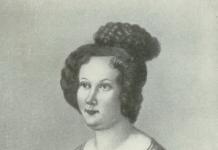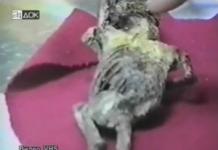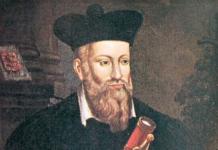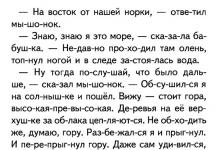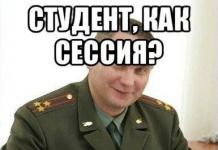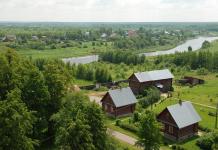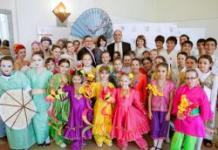On September 25 (October 6), 1768, the Russian-Turkish war of 1768-1774 began. - one of the key wars between the Russian and Ottoman empires, as a result of which Kerch, Yenikale and Kinburn, the lands between the Dnieper and the Bug were annexed to Russia, and the Crimean Khanate gained independence under the protectorate of Russia.
Russian-Turkish war 1768-1774 was a continuation of the struggle of Russia for access to the Black Sea, against the aggression of the Ottoman Empire, which sought to expand its possessions in the Black Sea region and the Caucasus and capture Astrakhan. Turkey also opposed the strengthening of Russian influence in Poland, where in 1764 the Russian protege Stanislav August Poniatowski was elevated to the throne. The reason for the war was Russia's rejection of the Turkish ultimatum on the withdrawal of Russian troops from Poland, where they had been conducting military operations against the Bar Confederation since 1768.
September 25 (October 6), 1768 Turkey, supported by France and Austria, began military operations against Russia in Ukraine and the Caucasus.
Attempts by the Turks to break through deep into Russia were thwarted by Russian troops under the command of P. A. Rumyantsev. Campaign 1768-1769 ended unsuccessfully for the Turks, without, however, bringing much success to the Russian army.
The turning point came in 1770, when hostilities unfolded on the Lower Danube. Rumyantsev won a number of significant victories at Larga and Cahul. At this time, the Russian squadron under the command of G. A. Spiridov for the first time in history made the transition from the Baltic Sea around Europe to the eastern part of the Mediterranean, with the complete absence of its bases along the route and in the face of the hostile attitude of France. As a result, she ended up in the rear of the Turkish fleet. Having successfully overcome the difficulties of a six-month voyage, the Russian sailors defeated the Turkish fleet in the Mediterranean. It was decisivenaval battle on the night of June 25-26, 1770 in the Chesme Bay of the Aegean off the coast of Asia Minor. The Russian fleet (4 battleships, 2 frigates, 1 bombardment ship and 4 fireships), having met the Turkish fleet (15 battleships and 70 other ships) in the Chios Strait, forced it to retreat to the Chesme Bay. As a result of heavy artillery fire and fire-ship attacks, the entire Turkish fleet was destroyed. In 1771, the Dardanelles were blocked, Turkish trade in the Mediterranean was undermined.
In June 1771, the 2nd army of General V. M. Dolgorukov captured Perekop, and then occupied the Crimea. The 1st Army, operating on a wide front, despite the lack of forces, successfully repelled enemy attempts to break through to the left bank of the Danube in June and October. On November 1 (12), 1772, Russia concluded an agreement with the Crimean Khan Sahib Giray, according to which the Crimea was declared independent from Turkey and under the protection of Russia.
In June 1773 the main forces of the Russian army crossed the Danube. June 9 (20), 18 thousand. the corps of General A.V. Suvorov defeated 40,000 troops near Kozludzha. Turkish corps, on the same day 15 thousand. the Turkish detachment was defeated at Turtukai by General I.P. Saltykov. Russian troops blocked the fortresses of Shumla, Ruschuk (Ruse) and Silistria, and the advance detachment of A.I. Zaborovsky crossed the Balkans.
The victories of the Russian troops forced Turkey to start peace negotiations, which ended with the signing on July 10 (21), 1774 of the Kyuchuk-Kaynarji peace, according to which the Crimea was declared independent and actually passed under Russian control. Russia also acquired a significant part of the northern coast of the Black Sea. The new border passed along the Bug and the Kuban. In the Crimea, Russia received the city of Kerch and the Yenikale fortress, and on the Black Sea coast of Northern Tavria, the Kinburn fortress. The Russian fleet now had the right to free passage through the Bosphorus and the Dardanelles.
Lit .: Petrov A.N. The war of Russia with Turkey and the Polish confederates from 1769-1774. SPb., 1866; The same [Electronic resource]. URL:
http://runivers.ru/lib/detail.php?ID=432753; Veselago F. A Brief History of the Russian Fleet. M.; L., 1939. Ch. 7. Russian-Turkish war of 1768-1774; The same [Electronic resource]. URL:http://militera.lib.ru/h/veselago_ff/index.html; Sakovich P. M. Actions of Suvorov in Turkey in 1773. St. Petersburg, 1853; The same [Electronic resource]. URL:http://runivers.ru/lib/detail.php?ID=1026975; Tarle E.V. Chesme battle and the first Russian expedition to the Archipelago // Academician E.V. Tarle. Works. T. 10. S. 11-91; The same [Electronic resource]. URL:http://militera.lib.ru/h/tarle4/index.html.See also in the Presidential Library:
Lebedev A. A. Creation and actions of the Azov flotilla in the Russian-Turkish war of 1768-1774gg. Abstract dis. ... cand. ist. Sciences. SPb., 2009
.Russian-Turkish war 1768-1774 (briefly)
Russian-Turkish war 1768-1774 (briefly)
In the winter of 1768-1769, the Russian-Turkish war begins. Russian troops under the command of Golitsyn cross the Dniester and capture the Khotyn fortress, entering Iasi. As a result, all of Moldova takes the oath to Catherine II.
At the same time, the new empress, together with her favorites, the Orlov brothers, built quite daring plans, hoping to expel all Muslims from the Balkan Peninsula. To accomplish this, the Orlovs propose to send agents and raise the Balkan Christians to revolt against the Muslims, and then put forward Russian squadrons to support the Aegean Sea.
In the summer in the Mediterranean, the flotillas of Elphinston and Spiridov sailed from Kronstadt, which, having arrived at the place, were able to incite a rebellion. But he was suppressed faster than Catherine II expected. At the same time, the Russian generals managed to win a dizzying victory at sea. They drove the enemy into the Chesme Bay and completely defeated them. By the end of 1770, the squadron of the Russian Empire captured about twenty islands.
Operating on land, Rumyantsev's army managed to defeat the Turks in the battles of Cahul and Larga. These victories provided Russia with all of Wallachia and there were no Turkish troops left in the north of the Danube.
In 1771, the troops of V. Dolgoruky occupied the entire Crimea, placed garrisons in its main fortresses and placed Sahib Giray on the Khan's throne, who swore allegiance to the Russian Empress. The squadrons of Spiridov and Orlov make long raids to Egypt, and the successes of the Russian troops are so impressive that Catherine wanted to annex the Crimea as soon as possible and ensure independence from the Muslims of Wallachia and Moldavia.
However, such a plan was opposed by the Western European Franco-Austrian bloc, and Frederick the Second the Great, who was a formal ally of Russia, behaved treacherously by putting forward a project according to which Catherine had to give up a large territory in the south, receiving Polish lands as compensation. The Empress accepted the condition, and this plan was carried out in the form of the so-called Partition of Poland in 1772.
At the same time, the Ottoman Sultan wanted to get out of the Russian-Turkish war without losses and in every possible way refused to recognize Russia's annexation of Crimea and its independence. After unsuccessful peace negotiations, the Empress orders Rumyantsev to invade the Danube with an army. But it did not bring anything outstanding.
And already in 1774, A. V. Suvorov managed to defeat the forty-thousandth Turkish army at Kozludzha, after which the Kainardzhi peace was signed.
Russian-Turkish war of 1768-1774
The struggle for access to the Black Sea and the acquisition of new lands in the south of Russia continued in the reign of Catherine II.
In the war with Turkey in 1768-1774. The Russian government decided to act offensively, while the Danubian principalities - Moldavia and Wallachia - were chosen as the main direction of military operations.
At the beginning of the war, the Crimean Khan Krym-Giray struck at Ukraine. In mid-January 1769, at the head of a 100,000-strong Crimean cavalry, he invaded the Novorossiysk province and Zaporozhye. Two Tatar detachments, meeting a decisive rebuff and suffering heavy losses, retreated to the Crimea. However, a 50,000-strong detachment led by Krym-Giray managed to penetrate far enough into the depths of Ukraine; bypassing large fortified cities, they were able to capture and burn a large number of villages. But, as soon as the khan found out that troops were sent against him. he immediately retreated to the steppe. This was the last raid of the Crimean Tatars on Ukrainian lands.
The Russian government orders the creation of the Azov Flotilla. Ships for her were built at the old Peter's shipyards of the Don and its tributaries, and later - in Azov and Taganrog. The construction was supervised by the talented naval commander Vice Admiral A. Senyavin, who later became the first commander of the young fleet.
The year 1770 brought great success to the Russian troops. Led by the talented commander Rumyantsev, the army defeated the Turkish-Tatar army in a number of battles. Especially large were the victories on the rivers Larga on July 7 (18) and Cahul on July 21 (August 1). Successes on land were reinforced by naval victories, which created favorable conditions for decisive action against the vassal and ally of Turkey - the Crimean Khanate. The plan for the conduct of military operations developed in 1771 provided for the mastery of the Crimea by the forces of the 2nd Russian army as the main task.
Preparing for the offensive was quite thorough. In the second half of 1770 - early 1771, a new line of fortifications was built on the lands of Zaporozhye - the Dnieper. It ran from the Dnieper along the rivers Konka and Berda to the Sea of Azov. Here, a bridgehead was created, from which the 2nd Army began offensive operations to seize the Crimea.
At this time, the Nogai Tatars turned to the new commander of the 2nd Army, P. Panin, with a request to be allowed to return to their native lands - the Sea of \u200b\u200bAzov and the Black Sea region (in 1769 they were forced out of there by Russian troops pursuing the cavalry of Crimea-Giray).
The Russian government gave an affirmative answer on the condition that the Nogais accept Russian citizenship. The Nogai Tatars of the Belgorod, Budzhak, Edisan, and later the Edigkul and Dzhambuluk hordes agreed to these conditions.
Occupation of the Crimea by Russian troops
The main forces of the 2nd Army, numbering 24 thousand people, headed by the new commander V. Dolgorukov, headed for Perekop at the end of April 1771.
The Crimean leadership understood that the Russian troops, which had come close to the peninsula, would soon begin their offensive. Attempts were made to maximize the concentration of available forces in the Crimea itself, for this purpose, Khan Selim-Girey, who was with his troops in the Turkish camp on the Danube, broke through the lines of Russian troops in September 1770 and returned to the region.
The Turkish sultan was extremely interested in keeping the Crimea under his rule. Despite the fact that Turkey itself was in an extremely difficult situation, Turkish troops, military specialists, and instructors headed by Ibrahim Pasha and one of the best generals Abazeh-Mohammed Pasha went to the Crimea. Under their leadership, fortifications were erected, Crimean troops were trained.
At this time, the main forces of the Russian army, led by General V. Dolgorukov, were approaching Perekop, at the same time, a detachment under the command of General Shcherbatov, using the ships of the Azov military flotilla, landed 50 kilometers from Perekop.
When on June 9, 1771, the main forces of the 2nd Army launched an attack on the Perekop fortifications, a detachment of General Prozorovsky hit the enemy flank, crossing the Sivash. Selim-Girey was forced to withdraw part of the troops from the main direction and throw them against the detachments of Shcherbatov and Prozorovsky. General Dolgorukov did not fail to take advantage of this and, having thrown back the Crimean Tatar troops from Perekop, he developed an offensive deep into the Crimea. The army under his command headed for Bakhchisaray, Brown's detachment rushed in the direction of Gezlev, while Shcherbatov's detachment moved towards Kaffa. General Shcherbatov defeats the 100,000-strong army of the Crimean Khan on June 29 on the way to Kaffa and after that takes possession of the Kerch and Taman peninsulas. Brown takes Gezlev without any problems. The main forces under the command of Dolgorukov did not meet much resistance either. Approaching the Ak-Mechet, the commander of the 2nd Army set up his camp near the river. Salgir (in the place where the commander's tent was, now in the center of Simferopol there is an obelisk - the Dolgorukovsky spire).
By the end of June, the Russian army captured, in fact, the entire territory of the peninsula. The Turkish fleet, located off the Crimean coast, was afraid to land troops to support the Khan's troops, he did not even dare to fight with the ships of the Azov flotilla. Soon the Sultan's squadron received the remnants of the Turkish troops who fought in the Crimea, Khan Selim-Girey with his harem, part of the beys and murzas, and departed for Constantinople.
At the same time, the highest Tatar nobility (beys and murzas) and the Muslim clergy turned to V. Dolgorukov with a request for an alliance and friendship between Crimea and Russia. On July 27, 1771, General V. Dolgorukov received Shirinsky Murza Ismail, who handed over to him a sworn sheet of eternal friendship and inseparable alliance with Russia, signed by 110 representatives of the highest Crimean Tatar nobility. On the eve, on the initiative of Jahan-Girey, Begadyr-Girey and the influential beys of the Shirinskys, a council of the highest Crimean nobility was convened, which approved the indicated sworn sheet. After that, the council elected a new khan - the Bey of Orsk Sahib-Girey (who was considered a supporter of rapprochement with Russia), and his brother, Shahin-Girey, as Kalga-sultan. V. Dolgorukov accepted the sworn list and approved the election of Sahib-Girey as the Crimean Khan. This meant that the Crimean Khanate became an independent state under the protectorate of Russia.
In November 1771, a similar council of the Crimean nobility, who had fled to Turkey, took place in Istanbul, and elected Maksud-Giray Khan. The Turkish Sultan, having approved this election, made every effort to return the Crimea to his dependence.
Leaving small garrisons in the main cities of the Crimea and in the ports of Kerch, Yenikale and Kinburn, the Russian troops left the peninsula.
Treaty of Kyuchuk-Kaynarji (1774)
Events developed successfully for the Russian army, which fought with Turkey, in other directions. Troops under the command of A. Suvorov achieved particular success. In particular, at the beginning of June 1774, the Russian army crossed the Danube, and on June 9, its vanguard under the command of Suvorov, numbering only 8,000 soldiers, defeated the 40,000th Turkish army at Kozludzhi. At the end of June, Russian troops, having crossed the Balkans, began to threaten Constantinople. Turkey invited Russia to conclude a peace treaty. A number of European states, concerned about extraordinary successes, began to put pressure on the Russian government and forced it to yield.
After short negotiations in the small Bulgarian village of Kyuchuk-Kaynardzhi, on July 10, 1774, representatives of Russia and Turkey signed a peace treaty. P. Rumyantsev and the Turkish Grand Vizier Mussun-zade Mehmet Pasha put their signatures under it. Turkey recognized the independence of the Crimean Khanate, while undertaking not to interfere in its internal affairs. Only according to tradition, the subordination of the khan to the Turkish sultan in religious matters, as the supreme caliph, was preserved. Russia included Big and Small Kabarda, the eastern part of the Kerch Peninsula with Kerch and Yenikale, Azov with the adjacent area, the Kinburn fortress at the mouth of the Dnieper, the territory between the Dnieper and the Southern Bug in their lower reaches to the Black Sea coast. Of particular importance for Russia were the articles of the treaty, according to which she achieved the right of free commercial navigation in the Black Sea through the Bosphorus and the Dardanelles and the entry of Russian merchant ships into Turkish ports. In addition, Turkey had to pay Russia an indemnity in the amount of 4.5 million rubles for three years.
For the Crimean Khanate, the most important was the third article of the Kyuchuk-Kaynardzhi Treaty, which determined its status: “All Tatar peoples have to be recognized as free and completely independent of outside power, but under the autocratic power of their own Khan of the Genghis generation, elected and erected by the entire Tatar society, who governs according to their ancient laws and customs, without giving an account of anything to any outside power, and for this, neither the Russian court nor the Ottoman Porte has to intervene either in the election and erection of the aforementioned khan, or in their domestic affairs under any view..."
The Kyuchuk-Kainarji Treaty had a number of significant conflicting clauses that could destabilize the situation in Crimea at any moment. The policy of both Turkey and Russia contributed to the split of the Crimean society into two parts - pro-Russian and pro-Ottoman, which further aggravated the situation on the peninsula.
Board of Shagin Giray
In 1775, the Turkish sultan decided to remove Sahib Giray from the throne, whose rule did not bring much satisfaction to Turkey. Devlet Giray is appointed as the new Crimean Khan. This did not suit the Russian government at all. Taking advantage of the fact that Turkey did not comply with a number of provisions of the Kyuchuk-Kaynarji Treaty (in particular, its troops continued to remain in Kaffa), putting forward a number of claims, Catherine II orders the entry of Russian troops into the Crimea. In November 1776, the corps under the command of A. Prozorovsky occupied Perekop without resistance.
In the spring of 1777, troops under the command of A. Suvorov occupied the steppe part of the peninsula. Supported by the Russian Empress, Shagin Giray lands in Yenikal. The absolute majority of the Crimean Tatar nobility goes over to his side. On March 29, 1777, the Divan decides to dismiss Devlet-Girey and proclaim Shahin-Girey a Crimean Khan. After the Russian troops captured Kaffa on May 20, Devlet Giray was forced to go to Turkey.
Shagin-Giray, seeing the complexity of the situation in his state, turned to Catherine II with a request to leave part of the Russian troops stationed near the Ak-Mechet in the Crimea. The reign of Shagin Giray cannot be considered successful: in an effort to accelerate the development and transformation of his state, he is trying to implement numerous reforms, while completely ignoring the difficult internal and external situation of the khanate. Many transformations seriously violated established traditions, required huge amounts of money (especially an attempt to build a new capital in Kaffa), and increased taxes from the population. The introduction of “European innovations” caused an extremely negative reaction among the people: Shagin-Giray himself did not ride a horse, as befitted a khan, but in a carriage, a population census was carried out (which caused a significant stir, since such events had never been held before, but to explain no one really bothered the population with its goal). After the khan took it into his head to create an army in the khanate in the European manner, and even more so the introduction of corporal punishment that offended human dignity in the form of flogging with gauntlets, the whole of Crimea rebelled against him in October 1777.
Turkey immediately took advantage of this. Having appointed a new Khan Selim-Girey III in Istanbul, the Sultan helps him land in the Crimea in December 1777. Not only the Crimean Tatars, but also the Nogai Tatars opposed Shahin-Girey. And only the intervention of Russian troops, led by A. Prozorovsky, helped Shagin-Giray to suppress this performance. Turkey was forced to agree with the approval of Shagin-Girey on the Khan's throne (Selim-Girey III was killed during the uprising).
However, Shagin-Giray did not draw the necessary conclusions and continued to introduce innovations, which predetermined his future fate.
Assessing the complexity of the situation in the Crimea, Catherine II takes the necessary measures. Instead of A. Prozorovsky, she appoints A. Suvorov as commander of the Russian troops, who was not only a brilliant commander, but also a wise diplomat.
On the one hand, Suvorov carried out a number of measures to strengthen the defense of the peninsula, especially the coast, in particular, he built fortifications at the entrance to the Akhtiar Bay, forbade Turkish ships to take fresh water from the river. Belbek and strengthened the protection of the coast. At the same time, he makes every effort so that the “Russian presence” does not cause bitterness among the Crimean Tatars, for this purpose he issued a special order for his army: “To observe complete friendship and establish mutual agreement between Russians and different levels of the inhabitants.” Knowing that European diplomacy has repeatedly drawn Russia's attention to the illegality of the presence of its troops in the Crimea, at the suggestion of G. Potemkin, it was decided to entrust these troops, headed by A. Suvorov, with ensuring the resettlement of the Christian population from Crimea (mainly Greek) . Such actions were carried out by the Russian government with the aim of undermining the already in dire condition of the Crimean economy. (Europe was presented with other motives for this resettlement - the oppression of Christians on the peninsula). A. Suvorov carries out the operation with his usual lightning speed (he did not even inform Shagin-Giray), from May to September 1778, 31 thousand Christians were resettled in the Sea of \u200b\u200bAzov and the Northern Black Sea region.
The Turkish sultan several times sent large squadrons of his ships to the shores, but, knowing how decisively and successfully the Russian troops under the command of A. Suvorov could act, the Turks did not dare to land their troops.
In turn, Catherine II did not dare to annex the Crimea to Russia, knowing the attitude of a number of European states to this issue. Moreover, under their pressure, Russia agreed to sign the Aynaly-Kavak Convention with Turkey on March 10, 1779. In response to the obligations of the Turkish sultan not to interfere in the internal affairs of the Crimean Khanate, Russia withdrew its troops from the Crimea, agreeing to the subordination of the khanate to the sultan in matters of religion, including the blessing of the khan upon his enthronement. Turkey also pledged to freely pass Russian merchant ships through the Bosphorus and the Dardanelles and recognize Shahin Giray as the Crimean Khan.
Fulfilling the decision of the convention, the Russian government withdraws its troops from the Crimea, leaving only a 6,000-strong garrison in Kerch and Yenikal.
Shagin-Girey, who had not been taught anything, unsuccessfully continued to "Europeanize" his khanate, and, as a result, in the autumn of 1781 a new uprising broke out, which was led by the khan's own brother Batyr-Girey, together with the Crimean mufti. This time, Shagin-Giray managed to cope with the performance of his subjects himself. However, the executions arranged by the khan provoked a new uprising in 1782, and Shahin Giray had to flee under the protection of the Russian garrison to Kerch. Turkey proclaimed Khan Mahmut Giray. The Russian government sends its troops to the Crimea to restore Shahin-Giray in power. The supporters of Mahmut Giray were defeated, and Shahin Giray took the khan's throne.
The situation in the Crimean Khanate was constantly deteriorating, and the Russian government understood that the further "rule" of Shahin-Girey only aggravated the situation and caused sharp discontent among the Crimean Tatars. At the same time, it was obvious that Crimea would not be able to maintain its independence in such a situation. Catherine II, of course, could not agree that the Crimean Khanate would again become a vassal of Turkey. After long meetings with G. Potemkin, she decides to join the Crimea to Russia.
This was facilitated by the prevailing international situation in the 80s of the XVIII century. The attention of the leading European states, and above all England and France, was riveted to North America, where a war for independence unfolded in the British colonies. Therefore, Europe could not intervene in the "showdown" between Russia and Turkey.
General Samoilov was sent to Shagin-Girey, who conveyed to the khan the proposal of Catherine II to voluntarily abdicate the throne and transfer the Crimea to Russia. At the same time, Shagin-Girey was guaranteed further patronage and an annual allocation of 200 thousand rubles to him. Realizing that he had no support from his subjects for a long time, in February 1783 Shagin-Giray abdicated.
April 8, 1783 Catherine II signs a manifesto (rescript) "On the acceptance of the Crimean peninsula, the island of Taman and the entire Kuban side under the Russian state." Understanding the extreme complexity of the events that took place and the possible consequences, in the manifesto the empress argues for the correctness of the decision: “In the Ottoman war that took place with the Porte, when the forces and victories of Our weapons gave us the full right to leave Our Crimea in favor, in the hands of our former. We then sacrificed this and other extensive conquests to the renewal of good harmony and friendship with the Ottoman Port, transforming the Tatar peoples into a free and independent region at the other end, in order to remove forever the cases and ways of strife and estrangement, which often occurred between Russia and the Port in the former Tatar state. But now, in accordance with the duty of the concern that lies before Us for the good and greatness of the Fatherland, trying to establish it for its benefit and security, as well as considering a means that forever puts aside unpleasant causes that disturb the eternal peace between the Russian and Ottoman empires, the prisoner, which we sincerely desire to preserve forever, does not less, and to replace and satisfy Our losses, We decided to take the Crimean peninsula, Taman Island and the Kuban side under Our power. Immediately in the manifesto, the Empress assures the Crimean Tatars that she undertakes: "to maintain them on an equal basis with Our natural subjects, to protect and protect their faces, property, temples and natural faith."
On July 21, 1774, the Ottoman Empire signed the Kyuchuk-Kaynarji Treaty with Russia. as a result of the war, which ended with the victory of the Russian Empire, it included the first lands in Crimea: the fortresses of Kerch and Yenikale (the rest of Crimea was annexed to Russia 9 years later - in 1783), territories on the northern coast of the Black Sea (including important fortresses - Azov, Kinburn, Taganrog) and in the North Caucasus, and the Crimean Khanate formally gained independence under the protectorate of Russia. Turkey paid Russia an indemnity of 4.5 million rubles. Russia received the right to have a navy in the Black Sea.
- 1 Background to the conflict
- 2 Immediate causes
- 3 The course of the war
- 3.1 Campaign of 1769
- 3.2 Campaign of 1770
- 3.2.1 Actions of the 1st Army
- 3.2.2 Actions of the 2nd Army
- 3.2.3 Mediterranean
- 3.2.4 Caucasus
- 3.3 Campaign of 1771
- 3.3.1 General situation and plans of the parties
- 3.3.2 Capture of Crimea
- 3.3.3 Operations on the Danube
- 3.4 Peace negotiations in 1772-1773
- 3.5 Campaign of 1773
- 3.6 Campaign of 1774
- 4 Results of the war
- 5 Naval Campaigns
- 6 See also
- 7 Notes
- 8 Literature
- 9 Links
Background to the conflict
See also: History of Russian-Turkish relationsThe reason for the aggravation of Russian-Turkish relations was the events in the Commonwealth. The foreign policy of the Russian Empire since the 1760s, under the influence of Nikita Panin, was aimed at creating the "Northern Accord" - a union of northern states (Russia, Prussia, Denmark, Sweden and the Commonwealth) with the support of England in opposition to the European hegemony of France and Austria. At the end of September 1763, King August III died in the Commonwealth and the usual strife of the parties began. Russia interfered in the election of the king, and in 1764 its candidate, Stanislav Poniatowski, was elected. The struggle of the parties continued even after the election of the king. Russia, together with Prussia, again raised the issue of dissidents, Russian troops were brought into the Commonwealth, and the Russian envoy in Warsaw, Prince Repnin, defended the interests of his government and dissidents so vigorously that at every step he committed illegal acts, which eventually came to arrest more prominent and influential members of the Seimas.
To counter Russian influence in 1768, a confederation was formed, with the support of the Catholic powers - France and Austria - which entered into an unsuccessful struggle with the Russian and Polish government troops. Stranded, the Confederates turned to the Porte for help. Jewels were collected to bribe influential people in Constantinople. The French government actively supported the petition of the Poles and used all possible measures to quarrel Turkey with Russia. For a long time this policy did not produce results. The Russian ambassador to Turkey A. M. Obreskov assured the Sultan that the Russian troops would be withdrawn from the Commonwealth in February 1768. The French government was dissatisfied with the activities of their ambassador Vergène and sent Saint-Prix to help him, and then special agent Tolay. The latter persuaded the Confederates to cede Volhynia and Podolia to Turkey in the event that she would help the Confederates. This proposal changed the position of Turkey, which began to look for an excuse to interfere in Polish affairs.
Immediate causes
During the hostilities against the Bar Confederation, a detachment of kolii who considered themselves in the Russian military service, among whom were Zaporizhzhya Cossacks, pursuing the Confederates, entered the city of Balta of Khan Ukraine, thus invading the territory of the Ottoman Empire, and then burned the city of Dubossary on the Dniester , where the Turkish-Tatar defenders of the Balta took refuge. This caused a diplomatic scandal. On September 25 (October 6), 1768, the Ottoman Grand Vizier invited Obreskov to his place, treated him insultingly and rudely and ordered him to be imprisoned in the Seven-Tower Castle, according to Ottoman custom, this meant a declaration of war. On October 29 (November 10), the collection of the Turkish army for a campaign against Russia was announced.
In response, Catherine II declared war on Turkey by a manifesto of November 18 (29), 1768. The Porte blamed Russia for the break. Russia, according to her, repeatedly violated the treaties concluded, built fortresses near the borders of Turkey, intervened in the affairs of the Commonwealth, seeking to limit the freedoms of the Poles and facilitating the election to the throne of "a man from among the officers, unworthy of being a king, and from whose family name and ancestors no one was a king"; finally, Russian troops ravaged Balta. Catherine addressed the European courts with a circular note, in which she tried to explain and prove the justice and directness of Russian policy and point out the injustice of the Porte, incited by Russia's opponents.
Liberation of Obreskov from the Seven-Tower Castle
Winter passed in preparation for hostilities. Turks and Confederates tried to agree on joint actions. In the autumn of 1768, Russia held two recruiting sets. Catherine II approved the proposal of the Orlov brothers to send the Russian fleet to the Mediterranean and kindle an anti-Turkish uprising among the Christian peoples of the Balkans. Nikita Panin and the Russian ambassador to England, I.G. Chernyshev, agreed with the British on assistance in supplying and organizing the fleet.
The course of the war
Campaign of 1769
The Russian troops were divided into 3 armies: the main one, under the command of General-in-Chief Prince A. M. Golitsyn (up to 71 thousand with a full complement, including 10 thousand Cossacks), was gathering near Kyiv; the second army, General-in-Chief Rumyantsev (up to 43 thousand), was supposed to protect the southern borders of Russia from the incursions of the Tatars and was located near Poltava and Bakhmut; the third army, general-in-chief Olitsa (up to 15 thousand) - near Lutsk, was appointed as the vanguard of the main army.
The fighting began on January 15 (26), 1769. The Crimean Tatars crossed the border of Russia and raided the Elisavetgrad province and Slavic Serbia, and on the way back to the Kiev province of the Commonwealth. On the Russian side, a detachment of Lieutenant General Vernes occupied Azov on March 6, and on March 19, a detachment of Brigadier Zheders occupied Taganrog.
The main army at the end of March concentrated at Staro-Konstantinov. The Moldavian clergy turned to the Russian army with a request to enter Moldavia and promised assistance. Golitsyn decided to advance despite the fact that the army was not completed - in the regiments intended for the actual crossing of the Dniester, on April 11, there were 44,531 people (infantry 27,187, cavalry 10,574, 1087 artillerymen, 5683 non-combatants), in addition to Golitsyn there were up to 6 thousand Don Cossacks. On April 15, the Russian army crossed the Dniester and on April 19 approached the Khotyn fortress with a fight. But Golitsyn did not have siege artillery, and he could not take possession of Khotyn by starvation, since he took food for only 8 days, and therefore on April 24 the army crossed back to Podolia. Golitsyn decided beyond the Dniester to wait for the approach of the main forces of the Turks and then give them a general battle. As a result, he was inactive for the next 2 months.
Wanting to divert the attention of the Turks from Podolia and at the same time get closer to the main army, Rumyantsev (34,459 people, including 6 thousand Little Russian and 3 thousand Don Cossacks) crossed the Dnieper in early May and headed for Elisavetgrad, while ordering the general lieutenant Berg (3800 people) to carry out sabotage from Bakhmut to the Crimean peninsula. Berg was joined by 16,000 Kalmyks and 3,000 Don Cossacks.
Meanwhile, on May 21, the main army of the Turks crossed the Danube, and the Confederates, encouraged by Golitsyn's retreat, tried to capture Lvov. The advance of the Turks was slow due to difficulties in building bridges on the Danube and poor food supply. Nevertheless, thanks to Golitsyn's inaction, they managed to gather very large forces on the Dniester during May, and on June 3 the Grand Vizier moved his army across the Prut River, settled down with the main forces (up to 100 thousand) at the Ryaba grave and then headed for Bendery , intending to continue to go to Elisavetgrad. In addition to the vizier's army, there were 20,000 Turks in Bendery, 35,000 Turks in Khotyn, up to 40,000 Tatars in Dubossary, and Khotyn had up to 40,000 Tatars. On June 19, the Turks, with forces of up to 20 thousand people, tried to cross the Dniester near Khotyn, but were driven back by the vanguard of the main army under the command of Major General Prince Prozorovsky.
Golitsyn learned that the vizier was going to Rumyantsev, and decided to confuse his plans. On June 24, he again crossed the Dniester and on July 2, having beaten off a counterattack by the Turks during a 6-hour battle, laid siege to Khotyn, but did not dare to storm. The garrison of the fortress experienced great difficulties with food and especially with fodder. The vizier, fearing for the fate of the fortress and receiving exaggerated information about the forces of Rumyantsev, abandoned the invasion of Novorossia and moved to Khotyn, but, having reached the Pockmarked Grave on July 20, he hesitated. Only Tatars under the command of Devlet Giray (25 thousand) went to Khotyn, followed by a corps under the command of Moldavanchi Pasha (30 thousand). On July 22, the Russian army repelled an attempt by Devlet Giray to break through the blockade of Khotyn. On July 25, Moldavanchi Pasha joined the Tatars. Deciding that a general battle was inevitable, Golitsyn stopped the siege of Khotyn and gathered all his troops in a common camp, waiting for the Turks to attack. However, having helped the garrison of Khotyn, Moldavanchi Pasha took up the defense. Golitsyn did not dare to attack himself, crossed the Dniester with a fight on August 1 and settled down at Knyaginin on August 3. Golitsyn's repeated retreat looked like a defeat and greatly encouraged the Turks. Sultan Mustafa III appointed Moldavanchi Pasha as the new vizier. The former vizier, his translator and ruler of Moldavia Gregory Kallimaki were executed for poor supply of the army, embezzlement and alleged treason.
On August 14, 23 and 29, the Turks made attempts to cross the Dniester near Khotyn. The most powerful attack took place on 29 August. The main forces of the new vizier (up to 80 thousand) attacked the detachments of Bruce and Saltykov, but were driven back across the river during a 12-hour battle. The losses of the Turks amounted to only more than 3,000 people killed, the losses of the Russians - 182 killed and 337 wounded. On September 6, a Turkish detachment numbering 9 or 12 thousand occupied a bridgehead on the left bank of the Dniester opposite Khotyn to protect their foragers. Due to the flood of the Dniester, he could not cross back and was cut off from his main forces. Golitsyn ordered five regiments (Weisman, Igelstrom, Kashkin, Krechetnikov, Sukhotin) to attack the Turks in the evening at 9 o'clock. in the dark, in a bayonet attack, the entire Turkish detachment was destroyed, most of the Turks were stabbed with bayonets, some were taken prisoner, some drowned while trying to swim to safety. Russian army killed 94, wounded 511 people.
These victories of the Russian army, as well as the lack of food and the rebellion that occurred in the Turkish army, forced Moldavanchi Pasha to retreat to Iasi, and then to the Pockmarked Grave. A significant part of his troops fled, and Devlet-Girey, left near Khotyn, after the retreat of the Turks, also went to the Pockmarked Grave. On September 9, Khotyn was occupied by Russian troops without a fight, after which Golitsyn retreated to Medzhybizh in order to get closer to his stores. At the same time, he sent a detachment of Lieutenant General Elmpt to Iasi, which was occupied on September 26. The vizier retreated to Isakcha, and the Crimean Khan, having learned about this, disbanded his troops. Only insignificant Turkish garrisons remained on the left bank of the Danube. Elmpt, after swearing the people of Moldavia to Catherine II and leaving a small detachment in Moldavia under the command of Prozorovsky, returned to Podolia in early October.
Meanwhile, the empress, dissatisfied with the defensive nature of Golitsyn's actions, promoted him to field marshal general and recalled him from the army. In his place, on August 13, she appointed Rumyantsev, who on September 18 arrived in the 1st Army; The 2nd Army was entrusted to General-General Count P.I. Panin. Since the Turks went beyond the Danube, and the Confederates were scattered, Rumyantsev, due to the onset of cold weather, postponed the resumption of hostilities until spring and deployed the troops of the main army in apartments between the Dniester, the Bug and Zbruch. However, to protect Moldova, the detachment in it was reinforced and entrusted to Lieutenant General Shtofeln. On November 21, Russian troops occupied Bucharest and advanced forward detachments to the left bank of the Danube. During the winter, the Turks repeatedly tried to dislodge Shtofeln's corps from Wallachia, but to no avail.
On September 17, Count Panin took command of the 2nd Army. this time on the right bank of the Dnieper in the ranks of the 2nd army there were 30,752 people. (and also there were 1333 sick and 1914 people on vacation). Panin received an order from Catherine to take control of Bendery, but in the absence of siege artillery, he limited himself to raids on this fortress by detachments of Count Wittgenstein and Major General Zorich. On October 27, the 2nd Army began to retreat to winter quarters and settled on the Uman-Poltava-Bakhmut line. in general, during the campaign of 1769, the troops of the 2nd army were limited to small skirmishes at the border points; General Berg's expedition to the Crimea undertaken in June was not successful: the grass in the steppe burned out, and the detachment was forced to return. However, the maneuvers of the 2nd Army, which covered a huge area from the Sea of Azov and almost to Khotyn itself, fettered the actions of the main army of the vizier and the Crimean Tatars and significantly contributed to the success of the main army.
Also in 1769: detachments of Cossacks and Kalmyks under the command of Major General Medem successfully operated in the Kuban and the North Caucasus and influenced the acceptance of Russian citizenship by Kabardians and other residents of the upper reaches of the Kuban; On July 29, the first squadron of the Mediterranean Fleet left Kronstadt and sailed around Europe to the Aegean Sea; on the Don, Vice Admiral A.N. Senyavin began the reconstruction of the Don (Azov) flotilla; in September, a detachment of Totleben arrived in Georgia for joint operations with Erekle II.
Campaign of 1770
Actions of the 1st Army
According to the plan of military operations drawn up by Rumyantsev for 1770, the main army was to finally clear Wallachia and Moldavia from the Turks and prevent the crossing of their main army across the Danube, and the 2nd, acting in connection with it, was to take control of Bendery and guard the southern borders of Russia. An important assignment was given to the Russian fleet in the Mediterranean: it was to support the uprising of the Greeks in the Morea and the Archipelago and try to penetrate the Dardanelles, threatening Constantinople (First Archipelago Expedition).
In turn, taking advantage of the small number and separation of the Moldavian corps under the command of Shtofeln, the Turks planned to defeat it and regain Moldavia and Wallachia. The Sultan appointed a new vizier and a new Crimean Khan. At the beginning of May, the main army of the vizier numbered up to 150 thousand and was preparing to cross the Danube to Isaccea.
Shtofeln's corps fought heavy battles in Wallachia all winter, suffered heavy losses from the plague, and by the spring of 1770 could hardly have even 10 thousand in service. Therefore, in view of the Turkish threat, on April 5 (16), 1770, Rumyantsev ordered Bucharest and Shtofeln's entire corps to be left concentrate at Byrlad and Falchi. On April 23, leaving a corps under the command of Lieutenant General Christopher von Essen (about 10 thousand) in the Commonwealth to cover the rear, the main army left the winter quarters and moved to Khotyn. On May 15, Rumyantsev crossed the Dniester. With the exception of the Moldavian corps, the strength of the main army on May 2 was 38,822 people (19,474 infantry, 6,399 cavalry, 1,631 artillerymen and engineers, 449 Cossacks, 3,544 recruits, 5,203 non-combatants and 2,122 sick; 296 guns and 16,000 horses). Another 3,598 recruits did not have time to arrive by the start of the campaign. In the camp near Khotin, Rumyantsev left 4 infantry regiments of an incomplete set for training recruits and receiving convalescents (that is, about 26 thousand fighters remained in the ranks of the main army) and marched south on May 25.
The offensive of Rumyantsev, who was in a hurry to preempt the Turks in Moldavia, was extremely slowed down by the spring thaw, as well as the spread of the plague in the Danubian principalities. On June 9, Rumyantsev camped on the left bank of the Prut near the village. Tsitsora (30 miles from Yass). On June 11, the new commander of the Moldavian corps, Repnin, who replaced Shtofeln, who died suddenly from the plague, crossed to the left bank of the Prut to join the vanguard of the main army. The number of Repnin's corps did not exceed 4-5 thousand people, since he left all his rangers (700 people) under the command of Potemkin and all his Cossacks and hussars on the right bank of the Prut. Thus, before the decisive battles in the main army of Rumyantsev there were no more than 30-31 thousand fighters and 5 thousand non-combatants, he was opposed by the main army of the vizier (up to 80 thousand people) and the Crimean Tatars (up to 70 thousand).
The actions of the main army in this campaign were brilliant and were marked by victories on June 17 (28), 1770 at the Pockmarked Grave, July 7 (18), 1770 at Larga and July 21 (August 1), 1770 at Cahul, where the Turks suffered a terrible defeat despite the fact that Rumyantsev was able to put up only 17 thousand people against them. The reward for Rumyantsev for Cahul was the rank of Field Marshal. The result of the victory at Cahul was the new successes of the Russian army. Repnin took the fortresses of Izmail on July 26 and Kiliya on August 19, and Igelstrom - Ackerman on September 28. On November 9, after heavy fighting, the Turks left Brailov. In the battles for Brailov, the detachment of Major General Nikolai Glebov lost about 700 killed and 2100 wounded. On November 14, Gudovich re-entered Bucharest; on December 28, Krechetnikov occupied Craiova. For winter quarters, the main army settled in Moldavia and Wallachia.
Actions of the 2nd Army
In the 2nd Russian army at the beginning of the campaign of 1770, there were 75,837 people - 40,837 regular troops (of which 5,761 were non-combatants), 20,000 Cossacks and 15,000 Kalmyks, and 3,320 recruits and siege artillery from Kyiv. The 2nd Army was divided into 3 parts: the main corps under the direct command of Count Panin, aimed at Bendery, Berg's corps on the left bank of the Dnieper - for operations against the Crimea, and Prozorovsky's corps against Ochakov. Berg's corps had 21,124 people (infantry 4521, cavalry 1569, non-combatants 1034, Cossacks 4 thousand, Kalmyks 10 thousand), the corps of Prince Prozorovsky totaled up to 14,000 - regular cavalry up to 1500 people, up to 7.5 thousand Cossacks and 5 thousand Kalmyks; up to 11 thousand people were used to protect the rear and the coast of the Sea of \u200b\u200bAzov, and in addition, 2391 Cossacks on ships made up the Dnieper flotilla.
On March 20, the 2nd Army set out from winter quarters; on June 7, Panin crossed the Bug; on July 2, across the Dniester. Fearing the plague, Panin decided to take Bender not by storm, but by bombardment and excavation. July 15 began the siege of Bendery. Panin's corps at that time had 33,744 people (including non-combatants) - 18,567 infantry, 3,574 artillerymen and engineers, 6,375 cavalry, 4,398 Cossacks, 830 sick and 16,000 horses. The Turkish garrison numbered more than 12 thousand people and put up stubborn resistance, which could not be broken by siege and bombing. Realizing the need for an assault, Panin requested significant reinforcements from Rumyantsev, so that in case of failure there would be an opportunity to continue the siege. He had to wait, since the 1st Army was active at that time. Finally, on September 15, detachments from the 1st Army were sent to Bendery and Panin decided to storm. For the attack, Panin was able to allocate only 11 thousand infantry, about 2.5 thousand cavalry and 2.5 thousand Cossacks. On the evening of September 15, having blown up a mine under the ramparts, the troops of the 2nd Army went on the attack. The battle went on all night, both armies showed courage and intransigence, but the military art of the Russians turned out to be higher and at 8 o'clock in the morning on September 16 (27), 1770, the Turks surrendered. During the assault, the city was completely burned down. Among the stormers were Prime Major Mikhail Kutuzov and cornet Emelyan Pugachev. in general, for the entire time of the siege of Bendery, Russian losses amounted to 6236 people (1672 killed and dead and 4564 wounded), the Turks lost more than 7 thousand killed, 5390 prisoners and 348 guns.
In addition to the actual military operations, on behalf of Catherine II, Panin negotiated with the Tatars throughout the year. As a result of these negotiations and the military successes of Russia, the Nogai Tatars of the Budzhak, Edisan, Yedichkul and Dzhambulak hordes decided to break away from Turkey and accept Russian protection.
Other corps of the 2nd Army also achieved success. On September 10, Prozorovsky near Ochakov destroyed a detachment of the Ochakov garrison, the losses of the Turks amounted to 3 thousand people. On September 24, before Perekop, a detachment of Major General Romanius from Berg's corps attacked the Tatars and drove them back beyond Perekop, the Tatars lost up to 2 thousand. Russian losses in both cases were insignificant.
After the capture of Bendery, at the military council of the 2nd Army, it was decided that it was impossible to organize a siege of Ochakov this year. On October 6, leaving a garrison of 5,000 in Bendery, the 2nd Army moved to the Dnieper for winter quarters. Panin expected to receive a field marshal's baton for his merits, but Catherine II was dissatisfied with the losses of the 2nd Army and the ruin of Bendery. “It was better not to take so much and so little to gain,” she said, having received the news of the capture of Bender. It was hardly fair to reproach Panin for this, but he did not receive the rank of field marshal and, considering himself offended, asked for a replacement. On November 19, Catherine dismissed him.
Mediterranean Sea
Main article:On February 17 (28), the 1st squadron of the Mediterranean Fleet landed troops in Morea. However, actions on land ended in failure for the Russian troops due to the underestimation by the Russian command of the strength of the Turks in Greece and the overestimation of the strength of the Greek rebels. At sea, events developed quite differently. On June 26 (July 7), almost simultaneously with the Cahul defeat, the Turks were also defeated at sea: their fleet in Chesme Bay was burned by the Russian fleet under the command of Admiral Grigory Spiridov and Rear Admiral John Elphinstone under the overall command of Count Alexei Orlov.
Caucasus
The Transcaucasian detachment of Totleben consisted of 1 infantry regiment, 4 squadrons, 12 guns and 5 Cossack hundreds (that is, about 3 thousand people). Russia's allies were King Erekle II of Kartli-Kakheti and King Solomon I of Imereti. However, relations between the allies did not work out. A Russian volunteer officer, Lieutenant Colonel Choglokov, decided to remove Totleben and use Russian troops to seize power. Totleben ordered the arrest of Choglokov, but he was helped to escape to Tiflis. Choglokov made a denunciation from Tiflis to Petersburg that Totleben had either gone mad or was plotting treason. Excited by this, Totleben accused Heraclius of intrigues. Under such conditions, military operations could not proceed successfully. In the spring of 1770, when Heraclius and Totleben moved together to the Turkish fortress of Akhaltsikhe, squabbles arose between them again. Totleben separated and went to Imeretia, and Heraclius, left alone, was forced to retreat. The Turks tried to surround him, but on April 20, Heraclius won a battle at Aspindze. Imereti Totleben took Kutaisi on August 6, then moved to Poti, defeating a 12,000-strong detachment of Turks along the way. The siege of Poti began on October 3, but was unsuccessful. Totleben and Solomon acted separately, completely disregarding each other. In the fall, Catherine II, considering that Totleben does more harm than good, replaced him with Major General Sukhotin. Sukhotin did not believe in the possibility of taking Poti and in the winter of 1771 lifted the siege. Because of this, an investigation was even launched over Sukhotin, but meanwhile Catherine recognized it was useless to keep troops beyond the Caucasus, and in the spring of 1772 the Transcaucasian detachment returned to Russia, leaving many Russian deserters in Georgia.
Campaign of 1771
General situation and plans of the parties
Military failures forced the Turkish command to think about their causes and reorganize their army. Mustafa III ordered that irregular troops no longer be used in the main theater of operations due to their unreliability. The vizier made up his main army only from regular troops - the Janissaries, while the size of the Turkish army decreased, but discipline improved. In the campaigns of 1769 and 1770, Russian artillery terrified the Turks, while Turkish artillery was clumsy and therefore ineffective. With the help of French specialists, the Turks set up the production of lightweight guns, and by the summer of 1771, 60 new-style guns arrived in the vizier's army. The complete superiority of the Russian army in field battles on the one hand, and the stubborn defense of Bender and Brailov by the Turks on the other, forced the Sultan and the Vizier to change their tactics - they decided to defend the key fortresses with strong garrisons and only go on the offensive with large forces. Realizing nevertheless their military weakness, on June 25 (July 6) the Turks concluded a convention with their old enemy - Austria, according to which Turkey undertook to pay Austria 10 million piastres and transfer Lesser Wallachia to her if she achieves the return of all the conquered to the Turks by diplomatic or military means Russian lands. The Turks even paid the Austrians a deposit of 3 million piastres and hoped to draw Russia into a war on two fronts, while they themselves were going to focus on the defense of the right bank of the Danube, the Dardanelles, Ochakov and the Crimea.
Crimea for Russia was the main goal of the campaign of 1771. Many years of diplomatic efforts by Ekaterina, Rumyantsev and Panin yielded results - the Crimean Tatars did not want to fight. Discord among the Tatars was caused by the replacement of Khan Kaplan-Gerai by the Sultan with Selim-Gerai. Catherine decided to take advantage of this and occupy the Crimea with the forces of the 2nd Army under the command of General-in-Chief Prince V. M. Dolgorukov. The task of the 1st Army was the defense of Wallachia and Moldavia, and Rumyantsev received from Catherine the authority to conduct peace negotiations directly with the vizier.
Capture of Crimea
The 2nd Army (about 30 thousand regular troops and 7 thousand Cossacks) set out from Poltava on April 20 and moved south along the Dnieper without experiencing supply problems. The newly built Azov flotilla was already combat-ready in 1771 and provided assistance from the sea. The Sultan, on the other hand, was unable to gather an army sufficient to defend the Crimea. 50,000 troops were supposed to come from Anatolia to Varna to be transferred to Ochakov, but the threat from Solomon I and Heraclius II forced the Sultan to send 40,000 of them to Georgia. The sultan was forced to keep 30 thousand in Constantinople, since the Russian fleet in the Aegean Sea prevented supplies to Constantinople and the Ottoman capital was on the verge of a food riot. 40 thousand had to be sent to protect the Dardanelles. The Turkish landing force that arrived in Crimea in June was small and its commander even refused to land.
On June 12, Dolgorukov approached Perekop, which was defended by 50,000 Tatars and 7,000 Turks under the personal command of the Crimean Khan. On the night of June 13-14, Russian troops stormed the Perekop line, the Perekop garrison surrendered on June 15 (26), 1771. On June 22, the Russians entered Gyozlev (Evpatoria) and on June 29 (July 10), 1771 Dolgorukov took Kafa (Feodosia). A separate detachment of Major General Prince Shcherbatov (about 4 thousand people), advancing from Genichesk along the Arabat Spit, captured the Arabat fortress on June 18, June 21 (July 2), 1771, took Kerch without resistance and June 22, Yenikale. Total Crimea was taken in 16 days. The resistance of the Turks and Tatars turned out to be weak, and the Crimean fortresses were in poor condition. On September 5, leaving garrisons in the Crimea under the general command of Prince Shcherbatov, the 2nd Army headed for winter quarters on the Dnieper. The Azov flotilla occupied the Kerch pier. Selim-Gerai fled, and the Tatars independently elected the pro-Russian-minded Sahib-Gerai as the new khan, who began peace negotiations with Russia, which was what Catherine wanted.
Action on the Danube
The main army of the vizier was located in Babadag and numbered up to 40 thousand people and 200 guns, there were up to 80 thousand people in the garrisons of the Danube fortresses and 15 thousand people in the Ochakov garrison. As of May 16, the Russian 1st Army had 77 thousand soldiers and up to 7.5 thousand Cossacks. However, of these, Rumyantsev needed to send 10 thousand soldiers and 2 thousand Cossacks to the Commonwealth to collect provisions and protect shops, and 5.9 thousand to guards and garrisons of fortresses; in addition, there were 8.5 thousand wounded and sick, another 1.9 thousand were absent in Russia, and there were 6 thousand non-combatants. So, 45 thousand soldiers and up to 5.5 thousand Cossacks remained directly for hostilities . Rumyantsev divided them into 3 divisions. The 1st division (including the reserve corps) under the command of Rumyantsev himself was located in Moldova, it had 21.6 thousand soldiers (16,219 infantry, 4961 cavalry, 474 artillerymen) and 1.5 thousand Cossacks. The 2nd or Bucharest division under the command of Olitsa defended the front from the mouth of the Yalomitsa to Turno and further along the Olta River. it was in the ranks of 13.3 thousand soldiers (9930 infantry, 2955 cavalry, 451 artillerymen) and up to 1.5 thousand Cossacks. The 3rd division under the command of Weisman - 10.1 thousand soldiers (infantry 7103, cavalry 2758, artillerymen 280) and 2.5 thousand Cossacks, and in addition, the Cossacks on 19 ships. Weisman operated from Brailov to the mouth of the Dniester. Due to the difficulties in transporting supplies (the army was still mainly supplied from the Commonwealth) and the presence of a strong flotilla of the Turks on the Danube, Rumyantsev could not transport his main forces beyond the Danube, so he was going to make small raids on the Turkish coast, tricks to lure the army of the vizier to the left bank and there to smash it in a pitched battle. Under his leadership, the construction of ships for the future crossing was carried out all year.
The location of the 1st division was convenient for supply, but on the other hand, Rumyantsev was never able to use it in action throughout the entire campaign. The entire burden of the fighting fell on the 2nd and 3rd divisions. On February 15, Olitz, with 3,130 infantry and 347 cavalry, attacked the Zhurzhu fortress, which surrendered on February 24 (March 7), 1771. The Turks lost up to 4,000 killed and 84 cannons, the Russians - 179 killed and 820 wounded. On April 7, Olits died, after which N.V. Repnin took command of the Bucharest division. Repnin decided on May 25 to gather his forces at the Turkish fortress of Turno for an assault. Taking advantage of this, on May 26, up to 6 thousand Turks from Ruschuk attacked the Russian garrison in Zhurzh (707 people). Repnin rushed to the rescue, walked 120 miles in 4 days, but was several hours late - on May 29, the Zhurzhi garrison surrendered. Encouraged by their success, the Turks tried to go on the offensive against the 2nd Division with large forces, but all their attacks were unsuccessful. In total, in the battles of May 26 - June 13, the Turks lost more than 2 thousand killed only, the loss of the Russians was 502 killed and wounded. Rumyantsev demanded to recapture Zhurzha, but the situation in the 2nd division was difficult. On paper, it was a formidable force, for example, it included 12 infantry regiments (the staff of the regiment was 1550 fighters) and 5 separate grenadier battalions (for comparison, 11 infantry regiments participated in the Crimean campaign of the 2nd Army), but by the summer of 1771 these regiments remained from half to a third of the personnel. The Bucharest division suffered from disease, lack of food, ammunition and transport, while it had to hold a long front. under these conditions, the offensive was impossible. Repnin took a sick leave and on June 25 von Essen led the division. On August 7 (18), 1771, Essen tried to return Zhurzha by storm, but was defeated, losing almost all officers killed or wounded, and a total of 514 killed and 1,795 wounded. After that, the two armies continued to play hide-and-seek with each other.
And in October, Rumyantsev's tactics nevertheless brought success. On October 9, a small Russian detachment approached Zhurzha and withdrew. Osmelev, on October 13, the Turks attacked the Igelstrom detachment on the Argesh River and the Russians retreated, losing 73 killed. The Turkish command decided that the moment had come to capture Wallachia, and finally a concentrated Turkish army of about 30 thousand cavalry and 7 thousand infantry attacked Bucharest on October 20 (31), 1771, but the Russian troops under the command of von Essen won, losing only 55 killed and 199 wounded, while the Turks lost up to 2000 killed and 350 captured. The Turkish army retreated across the Danube, for the pursuit and complete defeat of the Turks, the von Essen division did not have enough strength. October 24 (November 4) 1771 cavalry detachment of Lieutenant Colonel Cantemir (up to 1.5 thousand people) took Zhurzha almost without resistance, capturing 50 guns.
The 3rd division in 1771 made 4 successful raids on the fortresses of Isaccea and Tulcea. And if the first three were made by small detachments, then on October 19 (30), 1771 Weisman crossed the Danube already at the head of 4 thousand infantry, 1 thousand cavalry and 20 guns. Shocked by the numbers and bravery of the landing force, the Turks offered almost no resistance. Weisman took and turned into ruins Tulcea, Isakcha and Babadag. Simultaneously with Weisman, the detachment of Major General A.S. Miloradovich (1740 soldiers and 320 Cossacks) captured Machin and Girsovo. In total, the detachments of Weisman and Miloradovich captured 214 guns, 58 ships and a huge amount of ammunition and provisions, transported 16 thousand civilians to the left bank of the Danube. The Turks lost over 1,400 killed and 179 captured, the Russian losses were only 27 killed and 134 wounded. On October 27, all Russian detachments crossed back.
Peace negotiations in 1772-1773
Both Russia and Turkey really needed peace. In March 1772, Rumyantsev and Vizier Mussin-Zade agreed on a truce. Thanks to its bright victories, Russia was entitled to count on favorable conditions. However, Austria was dissatisfied with the fact that Russia was laying claim to the Danubian principalities, and from the autumn of 1771 it was defiantly preparing for war. Catherine II believed that the Austrians were bluffing, but, taking into account the position of her ally Frederick II (he began separate negotiations with the Austrians), she decided to leave the Danubian principalities to the Turks. During 1772, Russia, Prussia and Austria settled the contradictions among themselves mainly by dividing the Commonwealth. The Austrian Chancellor Kaunitz and Friedrich offered the Empress mediation to conclude peace with the Sultan; but Catherine insisted on direct negotiations with the Turks. For almost the whole of 1772 and until February 11, 1773, negotiations were going on in Focsani and Bucharest; none of the representatives of the Porte dared to take responsibility for recognizing the independence of the Crimean Khanate from the Ottoman Empire, and in the spring of 1773 the war resumed.
Campaign of 1773
During April and May 1773, the Russian detachments of Weisman, Count Saltykov and Suvorov made a number of successful searches on the right bank of the Danube, and on June 9, Rumyantsev himself crossed the Danube with the main forces near the village. Gurobala (about 30 miles below Silistria). On June 18, he approached Silistria, captured its advanced fortifications, but recognized his forces as insufficient for further actions against the fortress, and upon learning of the approach of Numan Pasha's 30,000 army, he retreated to Gurobal.
Weisman was sent to meet the Turks who had stopped at Kainarzhi, who attacked and defeated the enemy on June 22, but was himself killed. Despite this victory, Rumyantsev still did not consider himself strong enough for offensive operations and retreated back across the Danube. Then the Turks themselves went on the offensive: in early July, a strong detachment of them invaded Lesser Wallachia and took Craiovo; but their attempts (in August and September) against Zhurzhevo and Girsov ended in failure.
The empress persistently demanded the resumption of decisive offensive operations beyond the Danube; however, Rumyantsev, due to the late season, did not recognize this as possible, but limited himself to sending (at the end of September) detachments of General Ungern and Prince Dolgorukov to the right bank of the Danube to clear the entire Bulgarian territory from the enemy to the Shumla-Varna line. These detachments defeated the Turks at Karasu, but after Ungern's unsuccessful attack on Varna, they returned to the left bank, where the entire army of Rumyantsev settled down in winter quarters; on the right bank, only Girsov was occupied by Suvorov's detachment.
Extremely dissatisfied with the futility of the past campaign, Rumyantsev decided, with the onset of the spring of 1774, to penetrate to the very Balkans, despite the fact that his army was very weakened, that he left strong Turkish fortresses in his rear, and that the enemy fleet dominated the Black Sea. To facilitate the actions of Rumyantsev's army and divert the attention of the Turks, our squadron in the Archipelago was reinforced, and the 2nd Army was assigned to the siege of Ochakov.
In 1773, the Russian fleet was operating in the eastern Mediterranean, making attempts to land troops. After an unsuccessful assault on the fortress of Modon off the Greek coast, a two-month siege of Beirut was undertaken, culminating in the capture of the city thanks to the support of the Druze sheikhs.
Campaign of 1774
The campaign of 1774 opened in the second half of April: buildings gr. Kamensky and Suvorov crossed the Danube, cleared the Babadag region of the enemy, occupied the city of Bazardzhik, and on June 9 defeated the Turks at Kozludzha. Following the advanced corps, the main forces of Rumyantsev crossed to the left bank of the Danube (near Silistria, Turtukai and Gurobal).
Meanwhile, Kamensky and Suvorov, after the victory at Kozludzha, approached Shumla and proceeded to blockade it. The appearance of a detachment of brigadier Zaborovsky near Chalykivak, on the communications of Shumla with Constantinople, decided the fate of the campaign. Panic fear seized the Turks; the garrison of Shumla revolted, and although the vizier pacified him, however, he himself came to the conclusion that it was impossible to continue the war. Since his request for a truce was rejected by Rumyantsev, peace negotiations began, and on July 10 (July 21) the Kyuchuk-Kainarji peace treaty was signed.
The results of the war
As a result of the war, Crimea was declared independent from Turkey. Russia received Greater and Lesser Kabarda, Azov, Kerch, Yenikale and Kinburn, with the adjacent steppe between the Dnieper and the Bug. Russian ships were free to navigate Turkish waters; Russian subjects received the right to enjoy all the benefits that were enjoyed within Turkey by the peoples allied to the Turks; The Porte recognized the title of Russian emperors and undertook to call them padishahs, granted amnesty and freedom of religion to Balkan Christians, and allowed Russian representatives to assume the role of defenders of the Slavs and intercede for them. The Port also undertook to extend the amnesty to Georgia and Mingrelia and not to take more taxes from them by the youths and maidens. Russian subjects received the right to visit Jerusalem and other sacred places without any payment. Russia, in turn, agreed to have an envoy or plenipotentiary minister of the second rank and consuls with translators at the court of the Sultan to protect the interests of Russian merchants in different cities of Turkey. Further, Russia undertook to withdraw troops from Georgia and Mingrelia, so that the fortresses there would be guarded not by Turkish, but by native garrisons. Turkey pledged to pay Russia 4.5 million rubles for military expenses. On January 13, 1775, the Kyuchuk-Kaynarji peace was approved by the Sultan.
The treaty was very unfavorable for Turkey, and by this alone did not secure a more or less lasting peace for Russia. The port tried in every possible way to evade the exact execution of the contract - either it did not pay indemnity, or it did not allow Russian ships to pass from the Archipelago to the Black Sea, or it campaigned in the Crimea, trying to increase the number of its adherents there. Russia agreed to the fact that the Crimean Tatars recognized the spiritual authority of the Sultan as the head of the Muslims. This gave the Sultan the opportunity to exert political influence on the Tatars.
Naval Campaigns
Main article: First Archipelago Expeditionsee also
- Kyuchuk-Kaynarji peace treaty
- Dmitriev, Anton
Notes
- Heraclius II. XPOHOC
- Solomon I. XPOHOC
- History of wars (Encyclopedia for children). M.: Avanta, 2007. S. 277
- Petrov A. N. Chapter I. The Turkish army in the era of war 1769-1774. // The influence of the Turkish wars since the middle of the last century on the development of Russian military art. - St. Petersburg: Military Printing House, 1893. - T. I. - S. 32.
- Soviet historical encyclopedia. - M.: Soviet Encyclopedia. Ed. E. M. Zhukova. 1973-1982. Article "RUSSIAN-TURKISH WARS 17-19 centuries".
- Veselago Theodosius Fyodorovich. A Brief History of the Russian Fleet (from the beginning of the development of navigation until 1825) // Veselago F. A Brief History of the Russian Fleet. - M-L .: Naval publishing house of the NKVMF of the USSR, 1939. - 304 p. Edition 2nd. Chapter VII. page 93.
- Isabel de Madariaga. Russia in the era of Catherine the Great. - M.: New Literary Review, 2002. - 310 p.
- Isabel de Madariaga. Russia in the era of Catherine the Great. - M.: New Literary Review, 2002. - 330 p.
- Petrov A.N. The war of Russia with Turkey and the Polish confederates from 1769-1774. - SPb., 1866.- T. I. - S. 109.
- Petrov A.N. The war of Russia with Turkey and the Polish confederates from 1769-1774. - SPb., 1866.- T. I. - S. 119.
- Petrov A.N. The war of Russia with Turkey and the Polish confederates from 1769-1774. - St. Petersburg, 1866. - T. I. - S. 158.
- Petrov A.N. The war of Russia with Turkey and the Polish confederates from 1769-1774. - St. Petersburg, 1866. - T. I. - S. 299.
- Petrov A.N. The war of Russia with Turkey and the Polish confederates from 1769-1774. - St. Petersburg, 1866. - T. I. - S. 305.
- Petrov A.N. The war of Russia with Turkey and the Polish confederates from 1769-1774. - SPb., 1866.- T. I. - S. 313.
- Petrov A.N. The war of Russia with Turkey and the Polish confederates from 1769-1774. - SPb., 1866.- T. I. - S. 193.
- Buturlin D. P. Picture of the wars between Russia and Turkey in the reign of Empress Catherine II and Emperor Alexander I: 2 hours - St. Petersburg, 1829. - T. I. - P. 20.
- Buturlin D.P. Picture of the wars between Russia and Turkey in the reign of Empress Catherine II and Emperor Alexander I: 2 hours - St. Petersburg, 1829. - T. I. - P. 21.
- Buturlin D.P. Picture of Russia's wars with Turkey in the reign of Empress Catherine II and Emperor Alexander I: 2 hours - St. Petersburg, 1829. - T. I. - P. 23.
- Petrov A.N. The war of Russia with Turkey and the Polish confederates from 1769-1774. - SPb., 1866.- T. I. - S. 246.
- Buturlin D.P. Picture of the wars between Russia and Turkey in the reign of Empress Catherine II and Emperor Alexander I: 2 hours - St. Petersburg, 1829. - T. I. - P. 24.
- Petrov A.N. The war of Russia with Turkey and the Polish confederates from 1769-1774. - SPb., 1866.- T. I. - S. 251.
- Order of P. A. Rumyantsev to X. F. Shtofeln on his appointment as commander of the corps in Moldova. http://www.vostlit.info/Texts/Documenty/Russ/XVIII/1740-1760/Rumjancev_P_A/Sb_dok_tom_II/81-100/87.phtml?id=
- Petrov A.N. The war of Russia with Turkey and the Polish confederates from 1769-1774. - SPb., 1866.- T. I. - S. 312.
- Petrov A.N. The war of Russia with Turkey and the Polish confederates from 1769-1774. - SPb., 1866.- T. II. - S. 31.
- Petrov A.N. The war of Russia with Turkey and the Polish confederates from 1769-1774. - SPb., 1866.- T. II. - S. 69.
- Petrov A.N. The war of Russia with Turkey and the Polish confederates from 1769-1774. - SPb., 1866.- T. II. - S. 220.
- Petrov A.N. The war of Russia with Turkey and the Polish confederates from 1769-1774. - SPb., 1866.- T. II. - S. 83-84.
- Petrov A.N. The war of Russia with Turkey and the Polish confederates from 1769-1774. - SPb., 1866.- T. II. - S. 70.
- Petrov A.N. The war of Russia with Turkey and the Polish confederates from 1769-1774. - SPb., 1866.- T. II. - S. 89-90.
- Chronological index of military operations of the Russian army and navy. - SPb., 1908.- T. I. - S. 113.
- Petrov A.N. The war of Russia with Turkey and the Polish confederates from 1769-1774. - SPb., 1866.- T. II. - S. 172-175, 178, 183.
- Petrov A.N. The war of Russia with Turkey and the Polish confederates from 1769-1774. - SPb., 1866.- T. II. - P.272, Applications
- Petrov A.N. The war of Russia with Turkey and the Polish confederates from 1769-1774. - SPb., 1866.- T. II. - P.289.
- Petrov A.N. The war of Russia with Turkey and the Polish confederates from 1769-1774. - SPb., 1866.- T. II. - P.279-281, Applications
- Chronological index of military operations of the Russian army and navy. - St. Petersburg, 1908. - T. I. - S. 121.
- Petrov A.N. The war of Russia with Turkey and the Polish confederates from 1769-1774. - SPb., 1866.- T. II. - S.300.
- Petrov A.N. The war of Russia with Turkey and the Polish confederates from 1769-1774. - SPb., 1866.- T. II. - P.329.
- Petrov A.N. The war of Russia with Turkey and the Polish confederates from 1769-1774. - SPb., 1866.- T. II. - P.335-336.
- Petrov A.N. The war of Russia with Turkey and the Polish confederates from 1769-1774. - SPb., 1866.- T. II. - P.338.
- Petrov A.N. The war of Russia with Turkey and the Polish confederates from 1769-1774. - SPb., 1866.- T. II. - P.344.
- Petrov A.N. The war of Russia with Turkey and the Polish confederates from 1769-1774. - SPb., 1866.- T. II. - P.335.
- A. V. Potto. Caucasian war. Volume 1. From ancient times to Yermolov. 1899. http://www.vehi.net/istoriya/potto/kavkaz/index.html#_ftn2
- Petrov A.N. The war of Russia with Turkey and the Polish confederates from 1769-1774. - St. Petersburg, 1874. - T. III. - P.58-60.
- Isabel de Madariaga. Russia in the era of Catherine the Great. - M.: New Literary Review, 2002. - 360 p.
- Buturlin D.P. Picture of the wars between Russia and Turkey in the reign of Empress Catherine II and Emperor Alexander I: 2 hours - St. Petersburg, 1829. - T. I. - P. 64.
- Petrov A.N. The war of Russia with Turkey and the Polish confederates from 1769-1774. - St. Petersburg, 1874. - T. III. - P.52,60.
- Petrov A.N. The war of Russia with Turkey and the Polish confederates from 1769-1774. - St. Petersburg, 1874. - T. III. - P.53.
- Petrov A.N. The war of Russia with Turkey and the Polish confederates from 1769-1774. - St. Petersburg, 1874. - T. III. - P.61.
- Petrov A.N. The war of Russia with Turkey and the Polish confederates from 1769-1774. - St. Petersburg, 1874. - T. III. - P.187.
- Buturlin D.P. Picture of the wars between Russia and Turkey in the reign of Empress Catherine II and Emperor Alexander I: 2 hours - St. Petersburg, 1829.- T. I. - S. 65-66.
- Petrov A.N. The war of Russia with Turkey and the Polish confederates from 1769-1774. - St. Petersburg, 1874. - T. III. - P.182.
- Chronological index of military operations of the Russian army and navy. - SPb., 1908.- T. I. - S. 138.
- Petrov A.N. The war of Russia with Turkey and the Polish confederates from 1769-1774. - St. Petersburg, 1874. - T. III. - P.185-186.
- Petrov A.N. The war of Russia with Turkey and the Polish confederates from 1769-1774. - St. Petersburg, 1874. - T. III. - P.60-61.
- Petrov A.N. The war of Russia with Turkey and the Polish confederates from 1769-1774. - St. Petersburg, 1874. - T. III. - P.300-307.
- Buturlin D.P. Picture of Russia's wars with Turkey in the reign of Empress Catherine II and Emperor Alexander I: 2 hours - St. Petersburg, 1829.- T. I. - S. 55-56.
- Petrov A.N. The war of Russia with Turkey and the Polish confederates from 1769-1774. - St. Petersburg, 1874. - T. III. - P.23.
- Petrov A.N. The war of Russia with Turkey and the Polish confederates from 1769-1774. - St. Petersburg, 1874. - T. III. - P.8-13.
- Petrov A.N. The war of Russia with Turkey and the Polish confederates from 1769-1774. - St. Petersburg, 1874. - T. III. - P.80-91.
- Petrov A.N. The war of Russia with Turkey and the Polish confederates from 1769-1774. - St. Petersburg, 1874. - T. III. - S.301-302.
- Chronological index of military operations of the Russian army and navy. - St. Petersburg, 1908. - T. I. - S. 136.
- Petrov A.N. The war of Russia with Turkey and the Polish confederates from 1769-1774. - St. Petersburg, 1874. - T. III. - P.153.
- Petrov A.N. The war of Russia with Turkey and the Polish confederates from 1769-1774. - St. Petersburg, 1874. - T. III. - P.156-169.
- Russian Marines took Beirut and Paris // Viktor Myasnikov, Nezavisimaya Gazeta, 03/28/2008
- BEIRUT (PHOENICIAN) EXPEDITION
Literature
- Petrov A.N. The war of Russia with Turkey and the Polish confederates from 1769-1774. - St. Petersburg, 1866.
- Vasilenko N.P. Turkish wars of Russia // Encyclopedic Dictionary of Brockhaus and Efron: 86 volumes (82 volumes and 4 additional). - St. Petersburg, 1890-1907.
- The story of Resmi-efendiy, the Ottoman Minister of Foreign Affairs, about the seven-year struggle between Turkey and Russia (1769-1776). - St. Petersburg, 1854.
- Necati-efendi M. Notes of Muhammad Necati-effendi, a Turkish prisoner in Russia in 1771-1775. / Per. with tour. and foreword. V. Smirnova // Russian antiquity, 1894. - T. 81. - No. 3. - S. 113-134; No. 4. - S. 179-208; No. 5. - S. 144-169.
- Lebedev A.A. At the origins of the Black Sea Fleet of Russia. The Azov flotilla of Catherine II in the struggle for the Crimea and in the creation of the Black Sea Fleet (1768-1783) - St. Petersburg: IPK Gangut, 2011. - 832 p. - ISBN 978-5-904180-22-5
- Buturlin D.P. Picture of the wars between Russia and Turkey in the reign of Empress Catherine II and Emperor Alexander I. - St. Petersburg, 1829.
- Naval atlas of the Ministry of Defense of the USSR. Volume III. Military history. Part one.: Edition of the Main Staff of the Navy, 1958.
Links
- Sakovich P. M. Suvorov's actions in Turkey in 1773 on the Runivers website.
- Tarle E.V. Chesme battle and the first Russian expedition to the Archipelago.
- Archipelago expedition 1770-1773 Articles, documents, notes, memoirs.
| Wars and armed conflicts in Russia | |
|---|---|
| Old Russian state |
Caspian campaigns of Russ Campaigns of Rus against Byzantium (860 907 941-944 970-971 988 1024 1043) Campaigns of Svyatoslav against Khazaria Russian-Pecheneg wars |
| Russians principalities |
Russian-Polovtsian wars Swedish-Novgorod wars Civil strife Kalka Battle of Omovzha Mongol invasion Battle of Neva Battle of the Ice Battle of Rakovor Battle of Bortenevskaya Battle of the Irpen River Tver uprising Olgerd's campaigns against Moscow 1445 1467-1469 1478) Moscow-Novgorod (1456 1471 1477-1478) |
| Russian state |
Standing on the Ugra River Russian-Swedish (1495-1497 1554-1557 1563-1583 1590-1595 1610-1617 1656-1658 1700-1721) Russian-Crimean (1521 1571 Young Crimean campaigns) Cheremis (1552-1557 1571-1574 1555) Dagestan campaigns (1560 1594 1604-1605) Russian-Turkish (1568-1570 1672-1681 1686-1700 1710-1713) Russian-Polish (1577-1582 1609-1618 Smolensk 1654-1667) Bashkir uprisings (1662-16164 1704-1711) Annexation of Siberia Russian-Qing border conflict Peasant uprisings (Khlopka Bolotnikov Stepan Razin Bulavinskoe) |
| Russian empire |
Russian-Persian (1722-1723 1796 1804-1813 1826-1828 Russian intervention) Bashkir uprisings (1735-1740 1755-1756 1834-1835) Russian-Polish (Polish inheritance Bar Confederation 1792 Kosciuszko Uprising 1830 1863 1866) Russian-Turkish (17) -1739 1768-1774 1787-1791 1806-1812 1828-1829 1877-1878) Russo-Swedish (1741-1743 1788-1790 1808-1809) Austrian inheritance Seven Years' War Aleutian uprising Pugachev's peasant war Kazakh uprisings (1783-1797 1836-1833) - French (1798-1800 1805 1806-1807 Patriotic War 1813-1814) Russian-Tlingit war Anglo-Russian war Caucasian war Turkestan campaigns (Khiva (1839-1840) Russian-Kokand war Iskander-Kul Ikan battle of Tashkent Irjar battle Defense of Samarkand Khiva (1873) Kokand (1875-1876) Akhal-Teke Battle on Kushka Pamir) Hungarian uprising Crimean War Andijan uprising Ihetuan uprising Russo-Japanese war World War I(Eastern Europe Balkans Middle East Western Europe Central Asian uprising) |
| Soviet Russia/USSR |
Civil War Estonia Latvia Lithuania Poland Mongolia Georgia Central Asia Soviet-Finnish wars (1918-1920 1921-1922) Afghan campaigns (1929 1930) Soviet-Chinese conflicts (CER Xinjiang Baytak-Bogdo Damansky Zhalanashkol) Soviet-Japanese conflicts (Khasan Khalkhin-Gol) Second world war (Soviet-Finnish (1939-1940) Polish campaign The Great Patriotic War Soviet-Finnish (1941-1944) Iranian operation Soviet-Japanese) Cold War (Korea East Germany Hungary Vietnam Czechoslovakia Eritrea Afghanistan) |
| Russian Federation |
Transnistria Georgia Ossetian-Ingush conflict Tajikistan Chechen (1994-1996 1999-2009 aftermath) Dagestan South Ossetia Current conflicts are marked in italics. |
Russo-Turkish War (1768-1774) Information About
War with Turkey 1768–1774
From the beginning of the 60s of the XVIII century, the Russian navy began to revive. Catherine II, having come to power in 1762 and starting a large and complex foreign policy, took into account the importance of the fleet and the need to improve and strengthen it. The states of the ships were revised, their artillery armament was streamlined, reinforced shipbuilding began, new large multi-gun ships were laid down, ports and shipyards were reconstructed.
The reign of Empress Catherine II, which lasted 33 years, is one of the most brilliant eras in the history of the Russian fleet.
The strengthening of Russia in the middle of the 18th century, especially after the Seven Years' War and with the accession of Catherine II to the Russian throne, caused strong opposition from a number of Western European states, especially France, which sought to weaken Russian expansion in Western Europe.
The interests of Russia's economic development urgently demanded access to the Black Sea, through which grain could be traded from the southern regions of Russia.
The Black Sea was no less important for the defense of the Russian state, since the Turks and Crimean Tatars raided Russian territory from the Northern Black Sea region they had captured. Thus, in order to renew historical ties with the Middle East and the Mediterranean states and ensure the security of the southern borders, it was necessary to clear the northern coast of the Black Sea from the Turks.
Russo-Turkish War 1735–1739 did not resolve the conflict between the two countries. Russia did not get access to the Black Sea, which remained an inland sea of Turkey.
Turkey became the initiator of the new war. Under pressure from France and other European states, Turkey provoked the war in every possible way. Taking advantage of a minor border incident, Turkey on September 25, 1768 declared war on Russia.
The Privy Council, created by Catherine II on November 4, 1768, developed a plan for the war and, according to Catherine, began " to set fire to the Turkish Empire from all four corners". It was decided to wage an offensive war and send one army to the Dniester to invade the territory of Turkey, and the other to Ukraine for operations in the Crimea. In addition, it was supposed to move detachments of troops to Georgia and the Kuban.
The ultimate goals of the war for Russia were the establishment on the shores of the Azov and Black Seas and the opening through them of a free trade route to the Mediterranean Sea. To achieve these goals, after the occupation of Azov and Taganrog, the renewal of the Don (Azov) flotilla began with haste.
Archipelago expedition of the Russian fleet 1769–1774
The most daring naval enterprise of this war was the project of Count Aleksey Grigoryevich Orlov to send a Russian squadron to the Mediterranean Sea for operations against Turkey from the side of the Archipelago.
A.G. Orlov, who was in Italy, having become acquainted with the situation of the Christian subjects of Turkey, had long dreamed of taking advantage of their discontent in the event of war, organizing a general simultaneous uprising against the Turks and helping them regain their freedom and independence.
It was assumed that during the war such an uprising would be able to divert part of the Turkish troops from our main army, and at the conclusion of peace would serve to weaken Turkey somewhat and, consequently, to greater security of our southern borders. A.G. Orlov encouraged the empress in the success of the enterprise, if only a sufficiently strong Russian squadron was sent to help the insurgent peoples.
A detailed plan for naval operations in the Archipelago was presented by Alexei Orlov's brother Grigory and approved by the Council; " the order and guidance of all this feat” was entrusted to Alexei Orlov.
The main task was to unite the disparate actions of the Balkan peoples into a single struggle against Turkey.
For the first time in the history of our fleet, Russian squadrons were sent to the Mediterranean around Europe. Between England and France at that time there was a struggle for dominance in the colonies. Therefore, the British government supported Russia in the struggle for access to the southern seas, hoping thereby to weaken French influence in the Middle East. England provided Russian ships with their bases on their way to the Archipelago. Under pressure from England, France, which was in hostile relations with Russia, abandoned its plan of attacking the Russian fleet during its passage to the Aegean Sea (Archipelago).
Two squadrons were prepared for departure to the Mediterranean, of which one, under the command of Admiral Grigory Andreevich Spiridov, was supposed to contribute to the uprising against the Turks of the Greeks and Slavs subject to them, and the other, under the command of Rear Admiral John Elphinstone (an Englishman in Russian service), was intended to destroy Turkish maritime trade in the Archipelago, and especially to stop the supply of food to Constantinople through the Dardanelles. Both flagships, under the command of Alexei Orlov, acting independently of each other, had to keep in touch with each other and, if necessary, provide mutual assistance.
In the squadron G.A. Spiridov included the battleships "Svyatoslav", "Evstafiy", "Europe", "Ianuary", "Northern Eagle", "Three Hierarchs", "Three Saints", the frigate "Hope of Well-Being", bombardment ship "Thunder", 2 packet boats , 4 kicks (transport ships). Thus, the entire squadron consisted of 15 ships armed with 640 guns. The personnel of the ships consisted of 3011 people, in addition, landing troops of 2571 people were stationed on the ships (in total there were 5582 people on the squadron).
The squadron was supposed to operate in southern waters, where the process of destruction of the wooden hulls of ships was much faster than in northern waters. To protect the ships from the rapid destruction of their hulls, they were covered with felt and sheathed with boards on top. Therefore, the first Archipelago squadron G.A. Spiridova was also called "sheathing". By mid-July 1769, the preparation of the squadron was completed.
On July 18, 1769, her ships left the harbor for the Kronstadt raid and stood at Krasnaya Gorka. On the same day, Empress Catherine II arrived at the squadron and visited the flagship Eustathius.
July 26 squadron G.A. Spiridova weighed anchor and moved west. The transition of the squadron was very difficult due to contrary winds and the onset of illness. On August 9, the Svyatoslav ship separated from the squadron due to the damage it received and returned to Revel. On August 30, the ships arrived in Copenhagen. Here G.A. Spiridov joined the squadron with the newly built ship Rostislav, which had just arrived from Arkhangelsk, instead of the retired Svyatoslav. Only on September 12, the squadron continued sailing. Four days later, the Lapomink packet ship crashed on the Skagen Reef. September 25, two months after the release, the squadron arrived in the English port of Hull. By this time, the number of patients on ships had reached 700.
Due to the fact that some of the ships needed repairs, G.A. Spiridov decided to make further movement "according to his ability." The assembly point was Port Mahon on the island of Menorca.
On October 10, 1769, the admiral left Hull on the battleship Eustathius and on November 18 he was the first to arrive at Port Mahon. By the end of December, 4 ships of the line (“Eustace”, “Three Hierarchs”, “Three Hierarchs”, “Ianuary”), the frigate “Hope of Prosperity” and three small ships gathered in Port Mahon. The fifth ship "Rostislav" in January 1770 approached Menorca, but here it was overtaken by a storm and, due to damage to the main and mizzen mast, was forced to descend to Sardinia. The sixth ship "Europe" - when leaving Portsmouth, ran aground, got a hole and lost her rudder. After repairs, both ships joined the detachment of G.A. Spiridova. The seventh ship, the Northern Eagle, returned to Portsmouth due to damage, where it was sold for scrap.
Packet boat "Postman"
At the end of January 1770, a detachment of the battleship "Three Hierarchs", the frigate "Hope of Prosperity" and the packet ship "Postman" under the command of foreman S.K. Greig was sent from Port Mahon to Livorno, at the disposal of Count A.G., who was there. Orlov. The remaining 5 ships on February 18, 1770 approached the Morea Peninsula, where a landing force was landed in the port of Vitulo, which was joined by rebellious local residents. These troops were divided into two detachments, of which one (eastern) under the command of Captain Barkov, having defeated the Turks, on March 8 took the city of Mizitra (Sparta). But then on March 31, due to the instability of our undisciplined allies, it was defeated and completely destroyed near the city of Tripolitsa. Another (western) detachment under the command of Major P.P. Dolgorukov took possession of Arcadia and headed for Navarino. On March 29, a detachment of captain 1st rank I.A. was separated from the squadron. Borisov (the battleships "Ianuarius", "Three Saints" and the Greek frigate "St. Nicholas") with the landing troops of Brigadier I.A. Hannibal, who approached the fortress of Navarino. The landing party, together with the approaching troops of P.P. Dolgorukov captured Navarino on April 10. Admiral G.A. Spiridov was going to create a base for the squadron in Navarino.
By April 18, here, under the command of Count A.G. Orlov, 5 ships and 7 ships of other ranks, 2 Greek ships that raised Russian flags, and 2 hired transport gathered.
In order to protect oneself from unexpected attacks and to reliably hold Navarin, it was necessary to take the neighboring seaside fortress of Modon. A detachment of 500 people with 4 guns under the command of General Yu.V. was sent to her. Dolgorukov together with 800 Greeks. On April 26, A.G. arrived at Modon. Orlov with the battleship "Three Hierarchs", the frigates "Hope of Prosperity" and "St. Nicholas." However, during the siege of the fortress, at the first onslaught of the enemy, the Greeks operating with us fled, and the Russians, abandoning all the artillery that was on the shore, with a heavy loss of dead and wounded, were forced to lift the siege of Modon.
The Turkish government, concerned about the events in Morea, sent part of the troops from the Danube theater there to suppress the uprising and fight the Russian troops. At the same time, a squadron of Ibrahim Hassan Pasha was sent to the shores of Morea to destroy Russian ships.
The defeats near Modon and Tripolitsa convinced A.G. Orlov in the fallacy of counting on the successful assistance of local residents. When Russian troops appeared, they joined them in significant masses and marched with full readiness against the Turks they hated, but during the battle, at the first danger, they turned to flight, leaving small Russian detachments as a sacrifice to the Turks. In case of success, it was impossible to keep them from the barbaric tortures of the defeated enemies. With such unreliable allies and the small number of Russian landing forces, serious success on the shores, and even more so inside the country, was impossible.
The atmosphere created at the theater showed A.G. Orlov that as long as the Turkish fleet has the ability to freely transfer its reinforcements to places where military operations are taking place against Turkish fortresses and ground forces, it is impossible to count on success with the weakness of its landing forces and the unpreparedness of the Greeks.
G.A. It became clear to Spiridov that without striking the Turkish fleet it was impossible to achieve success on land. A.G. Orlov, at the insistence of the admiral, decided to transfer military operations to the sea. By this time, the Russian naval forces in the Archipelago had increased after the arrival of D. Elphinstone's squadron, which consisted of 3 ships, 2 frigates and 3 other ships.
May 15 G.A. Spiridov with four battleships and a frigate left Navarino to join the squadron of D. Elphinstone. A detachment of A.G. was left to defend the fortress. Orlova (a battleship and several small vessels).
The second Archipelago squadron under the command of Rear Admiral D. Elphinstone, consisting of three battleships "Tver", "Saratov", "Don't Touch Me", frigates "Nadezhda" and "Afrika", three transports and kick (total 3250 people) left from Kronstadt on October 9, 1769. The ship "Tver", which lost all its masts during a storm in the Baltic Sea, returned to Revel, instead of it, the ship "Svyatoslav" joined the squadron. After a difficult transition, the squadron reached England, where all the ships were brought into the dock for repairs. In early May 1770, D. Elphinstone approached the shores of the Morea and, without waiting for the order of the commander-in-chief A.G. Orlov, on his own initiative, landed landing troops delivered from Russia in the Kolokynthian Bay in the port of Rupino and ordered them to go to Mizitra.
After the landing of the troops, D. Elphinstone, having received information from the Greeks about the presence of the Turkish fleet nearby, instead of connecting with the squadron of G.A. Spiridov went in search of the Turks. On May 16, having passed Cape Angello, Russian sailors saw the enemy near the island of Spezia. Ignoring the fact that the Turkish fleet, which consisted of 10 battleships, 5 frigates and 7 small ships, was three times stronger than his squadron, Elphinstone, who cared only about his own glory, without waiting for the connection with the first squadron, recklessly rushed to the Turks. In the determination of the admiral to engage in battle with such unequal forces, the ambition of the Englishman, who did not want to share the laurels of a possible victory with the Russian admiral, played a significant role, while the defeat of D. Elphinstone, meanwhile, would inevitably lead to the defeat of G.A. Spiridova. At six o'clock in the evening, the Russian detachment caught up with the Turks, and a battle broke out between the ships near the island of Spezia. "Don't Touch Me", "Saratov", supported by the frigate "Nadezhda", attacked two ships of the Turks. The Turkish admiral Ibrahim Hasan Pasha, who assumed that in front of him was only the vanguard of the Russian fleet, followed by the main forces, under full sail hastened to take refuge under the protection of the batteries of the fortress of Napoli di Romagna.
On the morning of the next day, May 17, D. Elphinstone attacked the Turkish ships that were on springs under the cover of batteries. Russian ships fired on the move. From the shots of "Svyatoslav" on the Turkish flagship, the bowsprit caught fire, and he left the battle line. Russian ships also received some minor damage, with up to 10 people killed and wounded on them. Fearing that with the onset of calm, the ships would not be able to maneuver, and realizing that he would not be able to defeat the superior forces of the enemy on his own, D. Elphinstone left the bay.
After holding out for 5 days at the entrance to the Navpli Bay and receiving information that the squadron of G.A. Spiridov is located in the Kolokinth Bay, D. Elphinstone went to meet the admiral and on May 22 connected with him near the island of Tserigo.
After the departure of D. Elphinstone, the Turkish fleet hastened to leave the Navpli Gulf, and our united squadrons overtook it on May 24 already at the island of La Spezia. The ships marching in the forefront, despite the distance, opened fire on the enemy, but did not reach the hits. From that time, that is, from May 25, the Russian chase for the fleeing fleet of Kapudan Pasha continued for almost a month. It should be noted that the Turkish ships were not inferior to the Russians either in the quality of construction or in the strength of artillery.
Pursued for two days, the Turks finally disappeared from sight between the islands of Zeya and Fermo, and our fleet, lacking fresh water, went after it into Rafty Bay, and D. Elphinstone's detachment managed to capture a 4-gun enemy battery near the Negropont fortress.
Meanwhile, Turkish troops approached Navarino, and the stay of the Russians in this port was threatened. Therefore, on May 23, the fortifications of the fortress were blown up, and the remaining ships under the command of A.G. Orlova on May 27 went to join the fleet, which was waiting for him between the islands of Hermia and Milo.
G.A. Spiridov and D. Elphinstone, pursuing one common goal, sailed together, but with independence from each other and the impudent, quarrelsome character of D. Elphinstone, they could not help but quarrel. Having learned about the quarrel between the flagships, the commander-in-chief Count A.G. Orlov, without understanding their mutual claims, took command of both squadrons and on June 11 raised the Kaiser flag on his ship "Three Hierarchs".
Now our fleet consisted of 9 battleships (one 80-gun and eight 66-gun), 3 frigates, 1 bombardment ship, 3 kick, 1 packet boat and 13 hired and prize ships. There were about 740 guns on Russian ships.
Having learned from the Greeks that the Turkish fleet had gone north from the island of Paros, the Russian ships also headed north along the coast of Asia Minor. Sent on June 23 to search for the enemy fleet, the detachment of Brigadier S.K. Greiga (the battleship "Rostislav" and 2 small ships), soon found him anchored in the strait between the coast of Asia Minor and the island of Chios. At 17 o'clock he raised the signal: "I see enemy ships." The Turkish fleet consisted of 16 ships of the line (one 100-gun, one 96-gun, four 84-gun, one 80-gun, two 74-gun, one 70-gun, six 60-gun), 6 frigates and up to 60 small ships , galleys, etc.
The Turks stood in two lines near the Anatolian coast. In the first - 10 most powerful battleships 70-100-gun, in the second - 60-gun. Moreover, the ships of the second line stood in the gaps between the ships of the first line. Such a formation made it possible for the Turks to bring into battle the artillery of one side of all ships at once. Small ships were located between the coast and the lines of battleships. On the shore was the camp of the enemy. In total, the Turkish fleet had over 1400 guns. The fleet was commanded by the Algerian sailor Dzhezairmo-Hassan-bey, known for his courage; the chief commander of the fleet, Kapudan Pasha (Admiral General) Hassan Eddin, moved ashore and was in the ground forces camp located on the nearest coast.
“Seeing such a structure,” Count A. Orlov reported, “I was horrified and was in the dark: what should I do?”
On the night of June 24, a military council was held on the ship "Three Hierarchs", in which A.G. and F.G. Orlovs, G.A. Spiridov, D. Elphinstone, S.K. Greig, General Yu.V. Dolgorukov. It adopted a plan of attack for the Turkish fleet. Departing from the rules of linear tactics that prevailed in the European fleets, a new tactic was chosen: to descend on the enemy in a wake column almost perpendicular to his battle line and attack under sail from a short distance (50–70 m) the vanguard and part of the center and deliver a concentrated strike on the Turkish flagship, which should have led to a violation of the control of the Turkish fleet.
June 24, 1770 at 11 o'clock in the morning, with a calm north-west wind, the Russian fleet, being in the wind relative to the Turks, lined up, began to approach the enemy.

66-gun battleship "Three Hierarchs"
The fleet was built in a warrant battle. Nine battleships were divided into three equal groups: the vanguard - the battleships "Europe" (captain of the 1st rank F.A. Klokachev), "Evstafiy" (flag of Admiral G.A. Spiridov, commander captain of the 1st rank A. I. von Cruz), "Three Hierarchs" (captain of the 1st rank S.P. Khmetevsky); corps debatalia - battleships "Ianuary" (captain of the 1st rank I.A. Borisov), "Three Hierarchs" (Kaiser-flag A.G. Orlova, commander-captain-brigadier S.K. Greig), "Rostislav" (captain 1st rank V.M. Lupandin); rearguard - battleships "Don't Touch Me" (flag of Rear Admiral D. Elphinstone, commander-captain of the 1st rank P.F. Beshentsov), "Svyatoslav" (captain of the 1st rank V.V. Roksburg), "Saratov "(Captain 2nd rank A.G. Polivanov). The Russian fleet had only one 80-gun ship "Svyatoslav", the rest of the ships were 66-gun. In total, the Russians had 608 guns.
The bombardier ship, frigates, packet boats and other small craft sailed outside the line and did not participate in the battle.
The ship "Europe" was leading, heading almost to the middle of the enemy line, perpendicular to it. The next in line, "Evstafiy" was so close that his bowsprit almost touched the stern of the "Europe". When the "Europe" approached the enemy at a cannon shot (500-600 m), the Turks opened fire and began to fire on our other ships, which continued to move closer without responding to enemy fire.
The Turks at the beginning of the battle had a clear advantage - they met the Russian ships with longitudinal volleys, while the Russian ships could only fire from linear (bow) guns, but they were silent.
Only approaching the distance of a pistol shot, "Europe" turned and opened fire with all sides. The Russian ships following her turned to the north and fired volleys with double shots at the Turkish ships. Then they slowly, close to each other, began to move along the line of Turkish ships, firing artillery.
But soon, at the insistence of the Greek pilot, who announced that the course leads to stones, F.A. Klokachev had to turn on the right tack and leave the line. Admiral G.A. Spiridov, not understanding this maneuver, was so angry that he could not restrain himself and shouted: “Mr. Klokachev! I congratulate you as a sailor, ”that is, in front of the entire squadron, he accused him of cowardice and threatened to demote him. But a day later, F.A. Klokachev proved his courage and bravery.

66-gun ship of the line "Evstafiy"
The place of "Europe" was taken by "Evstafiy", on which the shots of three Turkish ships were concentrated, of which the largest and closest was the ship of the commander-in-chief. "Evstafiy" turned sideways to the enemy and from a distance of 50 m (pistol shot) concentrated fire on the flagship of the Turks "Real Mustafa". Following the "Evstafiy", the rest of the ships of the squadron G.A. sequentially entered the battle. Spiridov, the three ships of D. Elphinstone, who were in the rearguard, fell behind and managed to approach only the end of the battle.
The "Three Saints" tried to help the flagship, but the braces were broken on it, the sails were seriously damaged, and it was blown into the middle of the Turkish fleet. During the stay between the Turkish ships of the "Three Saints", acting from both sides, he fired 684 shots from the cannons. In smoke, in addition to enemy fire, he came under fire from the flagship A.G. Orlov "Three Hierarchs". At the beginning of the battle, "Ianuary", following the "Three Hierarchs", continuously hit the enemy with well-aimed shots. In the wake of the "Ianuary" followed the "Three Hierarchs" under the Kaiser flag A.G. Orlov.
Having entered the thick of the battle, he anchored and brought down the fire of his guns on the 100-gun ship of the Turkish Kapudan Pasha, which at that time was on the shore. They fired from guns, rifles, even pistols. Confusion seized the crew of the Turkish ship, the Turks cut off the anchor rope, but forgot about the spring, and the Turkish ship suddenly turned stern towards the Three Hierarchs and stood like that for about fifteen minutes under devastating longitudinal shots. In this situation, not a single Turkish gun could act against the "Three Hierarchs".
At 12.30, when the battle was in full swing, the "Three Saints" repaired the damage under enemy fire and again entered the line as the fourth ship. Behind him, Rostislav entered service, and then Europe, which left the line at the beginning of the battle.

"Evstafy", approaching the Turkish flagship 90-gun ship "Real-Mustafa" for a gun shot, more and more approached the enemy. Admiral G.A. Spiridov in dress uniform, with a drawn sword, paced around the poop. The musicians who were placed right there were ordered: "to play to the last." The fighting ships converged side by side; on the Eustathia, the broken rigging and spars, damaged sails and many dead and wounded did not make it possible to move away from the enemy, with whom they were already exchanging fire with rifles and pistols. At one o'clock in the afternoon, from the fire of unicorns from the Eustathius, a fire broke out on the Real Mustafa, which soon spread throughout the ship. Finally, the ships fell down, the Russian sailors ran to the enemy ship, and a desperate hand-to-hand fight began, during which the Turkish ship continued to burn. Its main mast, engulfed in fire, fell across the Eustathius. Sparks rained down into the open during the battle kryuyt-chamber. There was a deafening explosion - "Evstafiy" took off into the air, and after him and "Real-Mustafa". Admiral G.A. Spiridov, convinced of the impossibility of saving the ship, in accordance with the charter before the explosion, together with Count F.G. Orlov got on the boat. Boats hurried to the Eustathius from the nearest Russian ships, but they managed to take only G.A. Spiridova, F.G. Orlova and several people. Up to 620 people died on the ship, including 22 officers, and up to 60 were saved. Among the latter was the commander of the ship A.I. Cruz, thrown out of the ship by the explosion and kept on the water on a fragment of the mast, from which he was removed by an approaching boat.
At this most tense moment, the Turkish ships standing next to the flagship, fleeing the fire and the fire of the Russian ships, hastily cut off the anchor ropes, left the battle and hurried to take refuge in the Chesme Bay. The Russians pursued them to the entrance to the bay. The battle lasted about two hours. From the Russian side, only the vanguard and the corps de battle took part in it, the rearguard of D. Elphinstone took part only in the pursuit of the enemy.
Although the Turkish fleet lost only one ship, as did the Russians, it was in great disarray after the battle. In their hasty flight, the Turkish ships collided with each other, causing some to lose their bowsprits.

Bombardier ship "Thunder"
With the exception of "Evstafiy", our losses were very insignificant. The ship of the "Three Saints" suffered more than others, which received several holes in the hull, its spars and rigging were killed by cannonballs, and the loss in people: 1 officer and 6 sailors were killed, the commander, 3 officers and 20 sailors were wounded. On all other ships, the number of killed and wounded did not exceed 12.
The Russian fleet anchored at the entrance to the Chesme Bay outside of enemy shots, at a distance of no more than one cable from the ship. The Turks, unable to break through our line due to a calm and contrary wind, in anticipation of a favorable wind or help from Constantinople, hurried to strengthen the protection of the fleet by coastal fortifications. There was already a battery on the northern cape of the bay, now they were building another one - on the southern one.
At 17 o'clock, the bombardment ship "Thunder" (captain-lieutenant I.M. Perepechin) anchored in front of the entrance to the Chesme Bay and began shelling the Turkish fleet, which was in disarray, from mortars and howitzers.
The remainder of the 24th, all night and day on June 25, "Thunder" methodically "thrown" bombs and frames on enemy ships, some of them hit without causing fires. The prolonged shelling demoralized the Turks and prepared the conditions for the main attack.
At the military council on June 25, which met with the commander-in-chief on the ship "Three Hierarchs", it was decided from the flagships and captains, by closing the exit from the Chesme Bay for Turkish ships, to burn it with a combined strike of naval artillery and firewalls. If the fireships were available, the attack could have been launched on the evening of June 24, immediately after the Turks entered the bay. However, there were no ready-made firewalls in the Russian squadron. They were ordered to be made by the foreman of naval artillery I.A. Hannibal. During the day, four fire-ships from old Greek feluccas were equipped. Lieutenant Commander T. Mackenzie, Lieutenant Commander R.K. Dugdal, midshipman Prince V.A. Gagarin, Lieutenant D.S. Ilyin. Fire-ship teams were also recruited from volunteers.
To attack the Turkish fleet, a detachment was allocated consisting of four battleships - "Rostislav", "Don't Touch Me", "Europe" and "Saratov", two frigates "Hope" (captain-lieutenant P.A. Stepanov) and "Africa" (Lieutenant-Captain M. Kleopin) and bombardment ship "Thunder".
Brigadier S.K. was appointed commander of the detachment. Greig, who raised the braided pennant on the Rostislav. In the order of the commander-in-chief, given on this occasion, it is said: “Our cause must be decisive, so that this fleet will be defeated and ruined without continuing time, without which here, in the Archipelago, we cannot have free hands for distant victories.”
The width of the Chesme Bay is about 750 meters, and its length does not exceed 800 meters. The Turkish fleet was crowded in the depths of the bay, and given that the average length of the ship was about 54 meters, one can imagine how densely the Turkish ships stood along the width of the bay. Turkish batteries were located on the shore of the bay. The Turkish fleet was an ideal target for an attack by fire-ships, and the decision of the Russian command was fully in line with both the situation and the task.
According to the disposition given by S.K. Greig, the battleships "Europe", "Rostislav" and "Saratov" were supposed to enter the bay and anchor as close as possible to the enemy. "Don't Touch Me" was supposed to be positioned more seaward in order to provide them with assistance if necessary. The frigate "Hope" was supposed to operate on the northern battery of the Turks, the frigate "Africa" - on the southern one. "Thunder" was supposed to take a position seaward of the ships.

F. Hackert. Chesme battle
At 23.00, three lanterns were raised on the Rostislav - a signal to attack. The frigate Nadezhda was supposed to go first, but it was delayed. Then G.A. Spiridov from the "Three Hierarchs" ordered F.A. Klokachev to withdraw immediately, without waiting for other courts.
At 23.30, the ship "Europe" was the first to weigh anchor and, according to the order, took a place in the immediate vicinity of the Turkish ships. At 00.30 on June 26, he started a battle with the entire Turkish fleet, opening fire with cannonballs and brandskugels, and for about half an hour, enemy shots were directed at him alone, until other ships of the detachment entered into action.
By one o'clock in the morning, he arrived at the place appointed according to the disposition "Rostislav". Behind him were manufactured fire-ships. Following the "Europe" and "Rostislav" other ships and frigates came and took their places.
At the beginning of the second hour, an incendiary projectile successfully fired from the bombardment ship "Thunder" caused a fire on one of the Turkish ships, which stood in the center of the bay, the fire from which spread to the nearest leeward ships. A victorious "hurray" was heard in our fleet.
At this time, on a signal from Rostislav, fireships went on the attack. With the beginning of the fire-ship attack, the Russian ships ceased fire. Of the four fireships, one (lieutenant commander T. Mackenzie), not reaching the enemy line, became aground, the other (lieutenant commander R.K. Dugdal) was boarded by Turkish galleys, the third (warrant officer prince V.A. Gagarin ) fell off with an already burning ship. The commander of the fourth firewall, Lieutenant D.S. Ilyin, not only grappled with a large Turkish 84-gun ship, but when he lit his fire-ship, then, moving away in a boat, he also looked at what his action would be. A huge Turkish ship roared into the air, burning debris fell on neighboring ships and they also caught fire. Convinced that he had done his job, D.S. Ilyin returned to the Three Hierarchs on a boat.

N. Narbekov. Chesme battle. The feat of Lieutenant Ilyin
With the end of the fire-ship attack, the Russian ships supporting their attack again opened fire on the enemy. At the end of the second hour, two Turkish ships of the line took off into the air. At 2.30 three more Turkish ships ceased to exist. By 3 o'clock the fighting had ceased; our ships, showered with sparks, hurried to pull away from the burning ships and take out the Turkish ships, not covered by fire, saving the remaining living enemies. By this time, over 40 ships were blazing in the bay, representing a sea of \u200b\u200bfire. From 4:00 to 5:30, six more battleships exploded. At the 7th hour, a deafening explosion was heard, surpassing everything that had been so far in strength - four more ships exploded at the same time.
Explosions on Turkish ships lasted up to 10 hours. At 9 o'clock, the Russians landed a landing party, which took the battery on the northern cape.
The Turkish fleet was destroyed: 15 ships, 6 frigates and up to 50 small ships burned down at the enemy, up to 11 thousand Turks died.
According to eyewitnesses, the water in the bay was a thick mixture of ash, mud, debris and blood.
Russian sailors rescued from the fire and brought the ship "Rhodes" and 6 galleys out of the bay. "Rhodes" made up for the loss of "Evstafiya", the captain of the 1st rank A.I., who escaped from the "Evstafiya", was appointed its commander. Cruz.
Our losses were negligible: only on one ship "Europe", which received 14 holes, there were 9 people killed and wounded, and on the ship "Rostislav" there were several damages in the mast and hull.
The Chesme pogrom, having destroyed the Turkish fleet, made the Russians masters of the Archipelago. Significantly inferior to the enemy in the number of ships and guns, being thousands of miles from their ports, the Russian fleet, thanks to the correct use of the tactical situation, the courage and heroism of the Russian sailors, won a major victory and destroyed the strongest enemy fleet.
In memory of this victory, a medal was struck, on one side of which there was a portrait of Catherine II, on the other, a burning Turkish fleet and the inscription "WAS" were depicted.


After the destruction of the Turkish fleet at Chesme, the Russian fleet gained strategic dominance in the theater and was able to carry out the blockade of the Dardanelles and destroy the enemy's maritime trade. On June 28, having repaired the damage, the Russian ships left the Chesme Bay.
A detachment under the command of D. Elphinstone, consisting of three battleships, two frigates and several transports, went to the Dardanelles and on July 15 established a blockade of the strait.
For our further stay in the Archipelago, our fleet needed to have a convenient port. Count A.G. Orlov, convinced by experience of the impossibility of a safe base in some coastal point on the mainland, decided to choose one of the islands of the Archipelago for this. When choosing a port, the possibility of a close blockade of the Dardanelles was taken into account, which was supposed to stop the supply of food from the Archipelago, cause famine in Constantinople and thereby help organize a popular uprising. It was decided to take the port of Mudros, located on the island of Lemnos, which lies near the entrance to the Dardanelles. Leaving D. Elphinstone at the blockade of the strait, A.G. Orlov with the squadron G.A. Spiridov on July 19 began the siege of the main fortress of the island of Lemnos - Pelari. A landing party (500 people) was landed on the island, which was joined by up to 1000 people of the local population. But when, after an intensified bombardment, its garrison was already ready to surrender, on September 25, a Turkish squadron approached the island, landing troops (up to 5 thousand people) on it.
This happened as a result of D. Elphinstone's unauthorized departure from the Dardanelles. Rear Admiral left the squadron blocking the Dardanelles and on September 5 on the ship "Svyatoslav" went to Lemnos. However, approaching the island, on September 7, he crashed on the eastern Lemnos reef.
To save the flagship, several ships had to be called from the Dardanelles.
Transferring to the ship "Don't Touch Me" and leaving one of his frigates at the crashing ship, D. Elphinstone went to Pelari. By this, he weakened the blockade of the Dardanelles to such an extent that the Turks were able to freely leave the strait. The Russians were forced to stop the siege of the fortress and leave Lemnos.
Due to the inability to seize another port convenient for our fleet near the Dardanelles, the commander-in-chief chose the port of Auzu, located on the small island of Paros, lying in the southern part of the Archipelago, not occupied by the Turks. It was safer here, but the distance of Paros from the Dardanelles made it very difficult to maintain a constant, close blockade of the strait. Fortifications, an admiralty, shops and a camp for ground forces were built in Auz. Auza remained the main base of the Russian fleet in the Archipelago until the middle of 1775.
D. Elphinstone was removed from command, sent to Russia and then completely dismissed from service.
Due to the remoteness of Ausa from the Dardanelles, the implementation of the nearest blockade of the strait became difficult. It was carried out depending on the situation. At the same time, the main forces of the fleet were stationed south of the island of Imroz, and small detachments, consisting mainly of frigates, were sent to the Dardanelles.
The distant blockade of the Dardanelles was carried out constantly by small detachments of ships, cruising along the enemy's communication routes. The detachments captured a large number of merchant ships.
On December 25, 1770, the third squadron of Rear Admiral Arfa came to Auza - (the battleships "St. George the Victorious", "Vsevolod", "Asia" and 13 transports with troops numbering 2690 people.
One of the consequences of the successful operation of our fleet was the adoption at the beginning of 1771 of Russian citizenship by the inhabitants of 25 small islands lying in the middle of the Archipelago from Tasso to Candia.
The archipelago fleet was replenished with ships sent from the Baltic, bought and hired in England, prizes turned into military ships, and ships of Greek armorers. For three years, from the end of 1770 to the end of 1773, from the Baltic Sea in the detachments of I.N. Harp, S.K. Greig and M.T. Konyaev, 10 ships and 2 frigates came to the Archipelago. Thus, already in the summer of 1771, the number of the Archipelago fleet reached 50 pennants, including 10 battleships, 2 bombardment ships, about 20 frigates of various sizes, which had from 16 to 24 guns, 4 pinks, 1 packet boat and 11 pole and shebek, having from 12 to 20 guns and falconets. Among the commanders of the ships were Slavs and Greeks, of which Ivan and Mark Voinovich, Anton and Panioti Alexiano, Rizo, Anton Psaro and others distinguished themselves by their exploits.
In the summer of 1771, it was decided to intensify the actions of the fleet in order to divert part of the Turkish forces from the Danube theater. Detachments of Russian ships passed along the European and Asian coasts of Turkey, capturing enemy ships and landing troops that destroyed food depots.
Having learned that two ships and a xebec were being built on the island of Mitylene, on October 22, a squadron consisting of 6 battleships, 7 frigates and 2 bombardment ships under the command of A.G. headed from the Dardanelles to the island. Orlova and G.A. Spiridova. On October 31, she anchored at the fortress of Mitylene at a distance of a cannon shot, and the bombardment ships "Thunder" and "Lightning" opened fire on the fortifications. The shelling of the fortress continued on November 1 and 2, and under its cover on November 2, troops were landed on the island. He pushed the Turkish troops back to the fortress, captured the admiralty and burned on the stocks two 74-gun ships and one galley, almost completed, and captured up to 20 small ships in the harbor. Then, having removed the landing force, the squadron returned to Auza on November 6.
In 1771, unlike the previous year, there were no major battles, but Turkey suffered significant material and economic damage. Russian ships captured about 180 merchant ships in enemy sea communications.
At the beginning of 1772, most of the Russian ships were cruising in various regions of the Archipelago.
Having learned about the exit of the Turkish detachment from the Dardanelles (6 frigates and 6 galleys), on February 27, Rear Admiral A.B. Elmanov of 4 ships, 5 frigates, a bombardment vessel and a packet boat. During the blockade until the end of July, several Turkish ships were captured or destroyed.
In March, the 16-gun frigate Slava (Lieutenant M.I. Voinovich) under the walls of the Lagos fortress took three, burned four and sunk two Turkish ships with cargo.
In June, detachments of light ships (1 xebek, 4 poles, 2 semi-galleys) of Adjutant General Rizo and Lieutenant A.K. Psaro, while cruising off the coast of Syria, liberated the city of Sidon (Saida) from the Turkish siege. Then the detachment bombarded and took the city of Beirut, and 10 ships were captured and an indemnity was received equal to the annual amount paid by the city to the Sultan. Thus, the Russian ships successfully helped the Syrians and Egyptians who rebelled against the Porte.
In July 1772, a truce was concluded in the Archipelago, which was to be valid until November. It soon became known that Turkey, despite the ceasefire, was gathering forces to attack the Russian fleet.
The Turks could not forget the terrible defeat at Chesma and were preparing forces to attack the Russian fleet and its base - the port of Auzu. With the financial support of France and with the help of French engineers, new ships were hastily built at the shipyards of Constantinople and the Aegean.
In addition to the best and most powerful Turkish squadron, exterminated without a trace in the Chesme Bay, the Ottoman Porte still had ships (mainly frigates and shebeks) in the Adriatic Sea, in the Sea of Marmara, in the Bosphorus, off the coast of Tunisia.
The Turkish plan was to combine all available forces to suddenly attack Auz, burn the Russian ships and destroy the troops.
5 squadrons were supposed to participate in the attack. The first, Dulciniotskaya (47 frigates, shebeks and transports with 8 thousand landing troops), was supposed to, leaving the Adriatic Sea, take a new landing of 4 thousand people off the Morea coast, the second, Tunisian (6 frigates and 16 shebeks), was supposed to receive a landing force of 3 thousand people on Crete and connect with the Dulciniot, the third squadron was formed from the ships located near the island of Rhodes and Budrum, and in the same place, in Budrum, to receive landing troops, the fourth and fifth (Turkish and Algerian) squadrons, who were in Constantinople, had to, leaving the Dardanelles, connect with the ships that took the landing troops from the islands of Tenedos, Lemnos, Mytilene and Chios.
The Russian command, having guessed the enemy's plan, developed a plan to counter the attack of the Turks on Auz. It provided for the destruction of enemy squadrons before they were connected.
As early as September 16, a detachment of Major I. Voinovich was sent to the Ionian Sea in the area of the Gulf of Patras, consisting of 2 frigates, 1 shebeks and 2 poles in order to observe the Dulciniot ships. On October 12, a detachment of I. Voinovich discovered enemy ships in the Gulf of Patras.
In October 1772, the 4th squadron arrived in the Archipelago - 3 battleships (Chesma, Pobeda, Graf Orlov). During the transition, it was commanded by Rear Admiral V.Ya. Chichagov, but in Livorno he handed over command to the captain of the 1st rank M.T. Konyaev. Arriving in the Archipelago, the squadron cruised between the islands of Crete and Tserigo. By order of A.G. Orlov, the detachments of M.T. Konyaev and I. Voinovich united for joint operations in the Gulf of Patras.
In the Strait of Chios, where, according to intelligence, large ships and troops were concentrated, on October 18, a detachment of Rear Admiral S.K. Greig as part of the battleships Pobeda, Three Saints, Vsevolod, the frigates Nadezhda, Africa, Pobeda, Paros, Gregory and the bombardment ship Molniya. On October 24, the detachment came to the Chesma fortress, anchored and landed a landing party, which, under the cover of fire from ships, captured the fortress, burned several warehouses. The fire of the ships destroyed all the fortifications and sunk several small ships.
Upon learning that Turkey was arming ships off the coast of Africa at the mouth of the Nile, A.G. Orlov sent the frigate "St. Pavel ”(lieutenant P. Alexiano) and a polar. On October 21, Russian ships under fire from the fortress of Damietta entered the bay and sank 2 large ships. Then, taking several small ships, the Russian detachment headed out of the bay and captured another large ship at the entrance to it.
On October 25, the united detachments of Captain 1st Rank M.T. Konyaev (the battleships Chesma (P. Anichkov) and Graf Orlov (M.T. Konyaev) and Major I. Voinovich (frigates Nikolai (I. Voinovich) and Slava (M. Voinovich), shebeka Having discovered a squadron of 25 ships (9 frigates and 16 shebeks) under the command of Admiral Mustafa Pasha in the Gulf of Patras under the fortress of Patras, the “Zabiyaka”, the Poles “Modon” and “Auza”), took up a position blocking the enemy’s exit from the Gulf of Patras. On October 26, the detachment of the captain of the 1st rank M.T. Konyaev attacked the enemy squadron.After a short battle, the Turks lost 1 frigate and 2 shebeks and retreated to the Lepanta Bay under the cover of the fortress.After pursuing the enemy, the detachment of M.T.Konyaev remained under sail in front of the fortress Patras On October 27, a fresh contrary wind blew and from 11 o'clock in the morning the Russian detachment, maneuvering in front of the fortress of Patras and the enemy squadron, tried to get close to the distance of the shot.Only in the evening, he was able to approach and fire with volleys at the enemy ships anchored under the cover of fortress batteries. From the onset After dark, the fire had to be stopped.
A detachment of Captain 1st Rank M.T. Konyaev, consisting of 2 battleships, 2 frigates, 1 shebeks and 2 poles at 10 am on October 28, attacked the Dulciniot squadron (8 frigates and 14 shebeks), stationed in the Gulf of Patras under the cover of the fortresses of Patras and Lepanto. Enemy ships and batteries of fortresses fired on the approaching Russian ships. Approaching the enemy at a distance of two cables, Chesma, Graf Orlov and Nikolai anchored, the rest kept under sail. At 11.30 a Russian detachment opened fire on his ships and fortresses with cannonballs, knippels, brandskugels and grapeshot. By 13 o'clock, fires broke out on beaten Turkish ships, in a panic, the Turks rushed into the water and fled to the shore by swimming. The frigate "Nikolay" burned down the admiral's shebek, "Glory" - burned the frigate and 2 shebeks that ran aground. To destroy enemy ships, armed rowing ships were sent from the detachment, which burned 7 frigates and 8 shebeks standing on the shallows. The surviving enemy admiral's frigate was badly damaged and sank the next day.
author From the book A Brief History of the Russian Fleet author Veselago Theodosius FyodorovichChapter VII The Russo-Turkish War (1768-1774) Causes that Caused the War with Turkey .
From the book History. Russian history. Grade 10. Deep level. Part 2 author Lyashenko Leonid Mikhailovich§ 54. Russian-Turkish war 1768 - 1774 The first section of the Commonwealth The main directions of foreign policy. As a legacy from her predecessors, Catherine received three main directions in foreign policy. The first one is the northern one. The Swedes did not lose hope to return
From the book History of Russia XVIII-XIX centuries author Milov Leonid Vasilievich§ 2. Russian-Turkish war 1768-1774 and the first partition of Poland The clash of interests in Moldova and the Caucasus. Russia and Turkey in the 18th century were constantly in tense relations, from time to time aggravated by wars. Conflicts between these states were
From the book Europe in the era of imperialism 1871-1919. author Tarle Evgeny Viktorovich3. The war of the Balkan states with Turkey and the war of Serbia, Greece, Romania and Montenegro against Bulgaria The creation of a union of the Balkan states became absolutely inevitable from the moment when Italy so easily captured Tripolitania. The very plan for such an alliance took
From the book Russia and the Horde authorChapter 23 Crimea in the Russo-Turkish War of 1768–1774 In 1740–1768 Tatars continued their robbery raids on the southern regions of the Russian Empire. Somehow even mentioning this is stupid, as if to write that in 1740-1768. wolves continued to catch hares and bully the cattle of the peasants. At
From the book Textbook of Russian History author Platonov Sergey Fyodorovich§ 134. Russo-Turkish war 1768-1774 At the time when Empress Catherine's attention was drawn to the pacification of the Polish confederates and the Haidamak movement, Turkey declared war on Russia (1768). The pretext for this was the border robberies of the Gaidamaks (who ruined
From the book History of Russia from the beginning of the XVIII to the end of the XIX century author Bokhanov Alexander Nikolaevich§ 2. Russian - Turkish war 1768-1774 and the first partition of Poland Russia and Turkey in the 18th century are constantly strained relations. We have already talked about the most difficult problem for Russia of the southern steppe borders, about the constant Crimean-Turkish aggression, and finally, about the problem of getting out
From the book The Millennium Battle for Tsargrad author Shirokorad Alexander BorisovichSection VI WAR 1768-1774
From the book Chronology of Russian History. Russia and the world author Anisimov Evgeny Viktorovich1768-1774 and 1787-1791 Russo-Turkish Wars During the reign of Catherine, the Russian Empire expanded significantly in the south (in wars with Turkey) and in the west (partitions of Poland). It was the most dynamic time in the development of the empire. Wise, strong-willed empress, great opportunities
From the book Russian intelligence of the XVIII century. Secrets of the gallant age author Grazhul Veniamin SemenovichRUSSIAN-TURKISH WAR (1768 -1774) Catherine II stakes on victory. - Discord in the Turkish camp. - Intelligence "decomposes" Porto from the inside. - Three "lines" of reconnaissance are active. - Pavel Maruzzi "illuminates" the Mediterranean. - Catherine prescribes "...send spies." -
From the book History of wars at sea from ancient times to the end of the 19th century author Stenzel AlfredRussian-Turkish war 1768-1774 As we said in the first chapter, the Russian fleet, both in the north and in the south, after the death of Peter the Great, fell into complete decline, especially with regard to personnel. The short Swedish war of 1741-1743 caused only a temporary
From the book A Brief History of the Russian Fleet author Veselago Theodosius Fyodorovich From the book A Brief History of the Russian Fleet author Veselago Theodosius FyodorovichChapter VII The Russo-Turkish War (1768-1774) Causes that Caused the War with Turkey .
From the book History of the Ukrainian SSR in ten volumes. Volume three author Team of authors1. RUSSIAN-TURKISH WARRIOR 1768–1774 RUSSIA'S ACQUISITION OF OUTPUT TO THE BLACK AND AZOV SEA Internal and international position of Russia on the eve of the war. Strengthening the army and navy. In the second half of the XVIII century. in Russia, the decomposition of the feudal-serf system intensified.








































































